Pasta — the signature Italian staple loved around the world — has a rich history and a huge variety of shapes and forms (over 350 by some counts!) It’s an integral and unmistakable part of Italian culture. In this article we’ll explore the correct pronunciation of 30 types of pasta and learn some intriguing and fun trivia about this beloved dish.
To help you learn about the wonderful world of pasta and its many varieties, we made Inevitaly's first-ever game show extravaganza: "GUESS THE PASTA" Can you identify these 30 types of pasta from the pictures (warning: spoilers below)? And do you know how to pronounce Italian pasta names correctly? Play along and test your own pasta knowledge and pronunciation skills. From spaghetti to strozzapreti, fettuccine to farfalle — let's find out if you're a true pasta champion... Let the pasta games begin!
Origin: Pasta originated in China
Believe it or not, pasta's origins are not Italian! The story of pasta dates back to ancient China, where noodles made from millet were already being consumed over 4,000 years ago. This culinary wonder traveled along the Silk Road, making its way to the Middle East and eventually landing in Italy. Here, it was embraced with enthusiasm and the Italians put their spin on it, giving birth to the diverse and mouth-watering world of Italian pasta.
Kneading: Before machinery, pasta was kneaded by…foot
In the early days of pasta-making, long before modern machinery streamlined the process, kneading the dough was an arduous task. To achieve the perfect texture, pasta dough was kneaded by foot! Yes, you read that right. Italian pasta makers would stomp on the dough with their feet, using their weight to create a consistent and elastic dough. Thankfully, modern pasta-making techniques have evolved, sparing us from the unusual sight of pasta being kneaded by foot!
Al dente: Al dente pasta tastes better and keeps you full longer
One of the defining characteristics of Italian pasta is its "al dente" texture. The term "al dente" translates to "to the tooth", and it refers to pasta that is cooked just enough to retain a slight firmness when bitten. Achieving the perfect al dente consistency is an art, as it ensures the pasta remains flavorful and retains its nutrients, providing a more satisfying and filling dining experience.
Regional Diversity: Over 350 variations of pasta
Italy's love for pasta goes far beyond just a single dish; it's a diverse culinary tapestry that varies significantly from one region to another. From Trentino-Alto Adige’s mezzelune, to Apulia’s orecchiette — each region of Italy takes pride in its unique pasta shapes, traditional recipes, and distinct cooking methods, making pasta an integral part of Italians’ regional as well as national identity. But don't just take our word for it; check out this interactive map by TasteAtlas to learn more about our rich regional pasta culture.
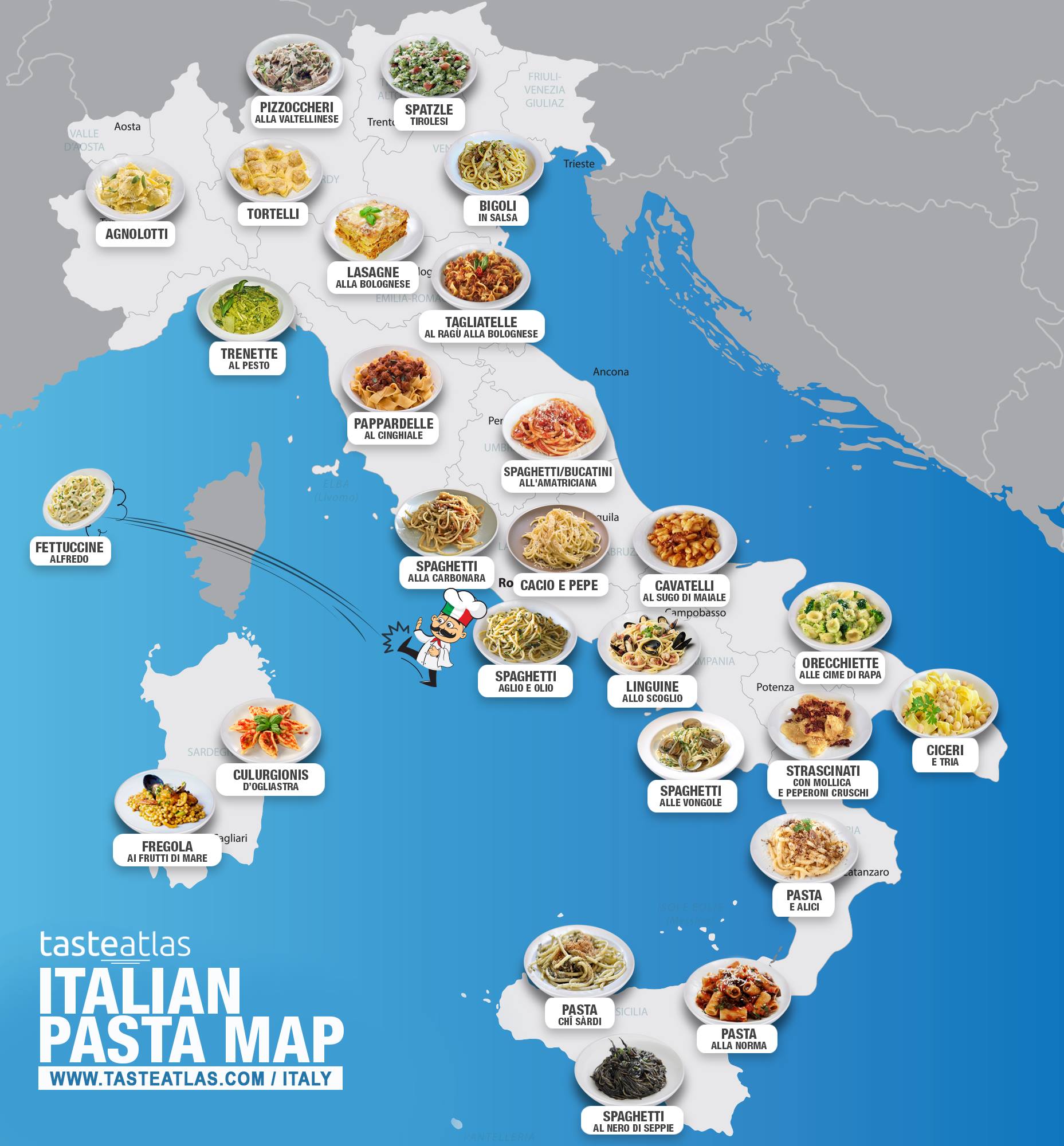
Eating habits: The average Italian eats 60 pounds of pasta per year!
It's no secret that Italians have an enduring love affair with pasta. On average, an Italian consumes a whopping 60 pounds of pasta annually! For us, pasta is more than just a meal; it's a way of life. In contrast, while pasta is popular in many American households, the average person in the United States consumes approximately 15 pounds of pasta per year. And given that Italy exports a staggering 1.7 million tons of pasta a year, that leaves plenty of space for more 😉
Name: The word "pasta" is an Italian word meaning "paste"
The word "pasta" is derived from the Italian word "paste," which translates to "paste" or "dough." Not to be confused with “pasto”, which means a meal.
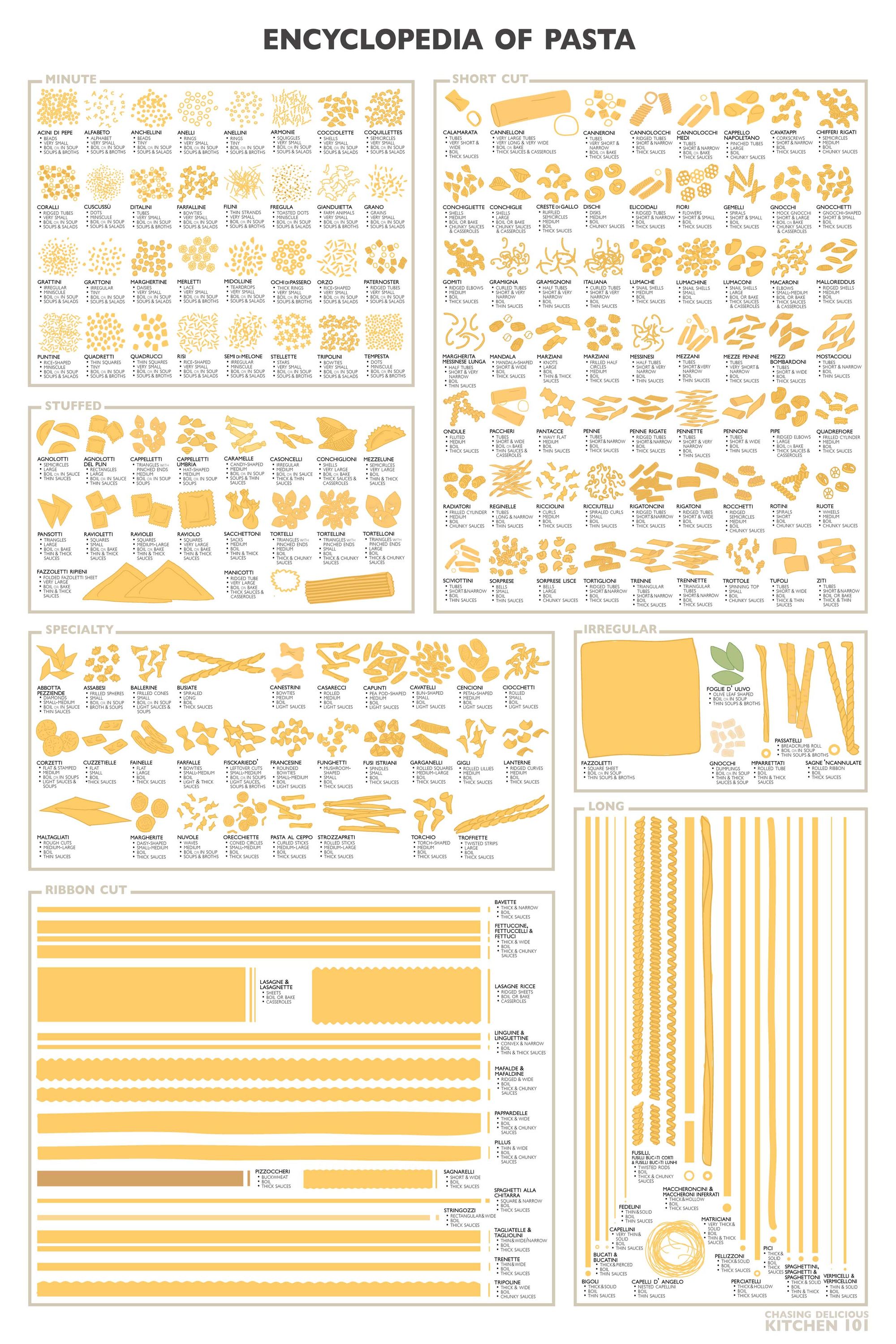
💬 Pronunciation: How to say that pasta name right!
Pronouncing pasta names correctly is not just about being accurate and understood by Italians — more importantly, you can impress your friends by sounding like a natural!
So let's dive into the world of pasta names with our selection of 30 types of pasta, along with audio clips to practice your pronunciation:
Long Pasta
1) Spaghetti — Who doesn’t know about spaghetti? It is one of the most popular pasta varieties worldwide. Spaghetti is commonly served with sauces such as carbonara or Bolognese ragù. But also in Italy it is often eaten with just a simple tomato and basil sauce or with garlic, olive oil and chili peppers (“aglio, olio e peperoncino”), highlighting the quality of the pasta itself. The word spaghetti is always plural in Italian: “gli spaghetti sono buoni”.
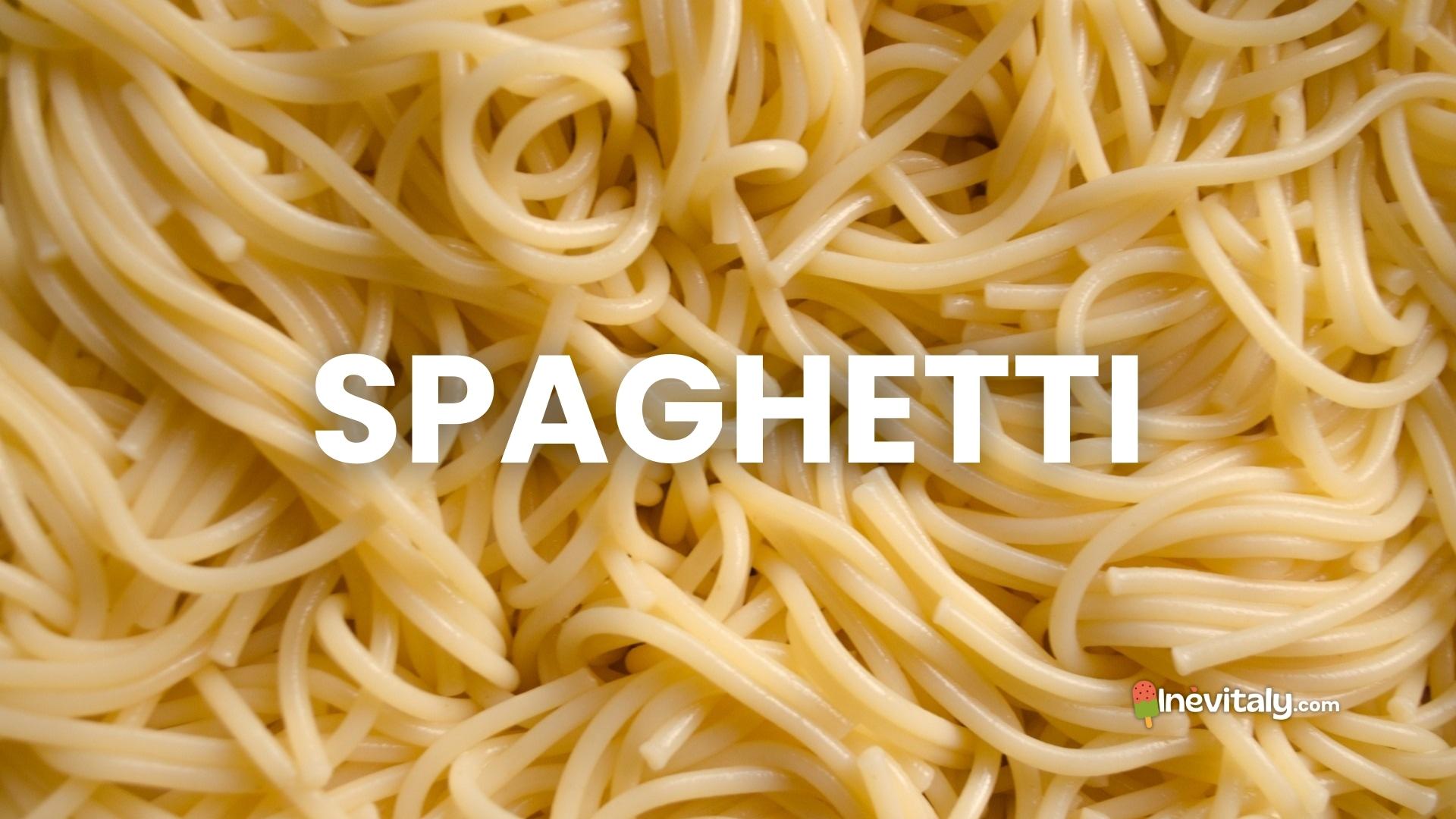
2) Linguine — Linguine is a type of pasta similar to spaghetti but flattened and wider, resembling a small ribbon. It hails from the Liguria region of Italy and is often paired with seafood-based sauces, such as clam sauce or pesto. The flat surface of linguine allows the sauce to cling better to the pasta.
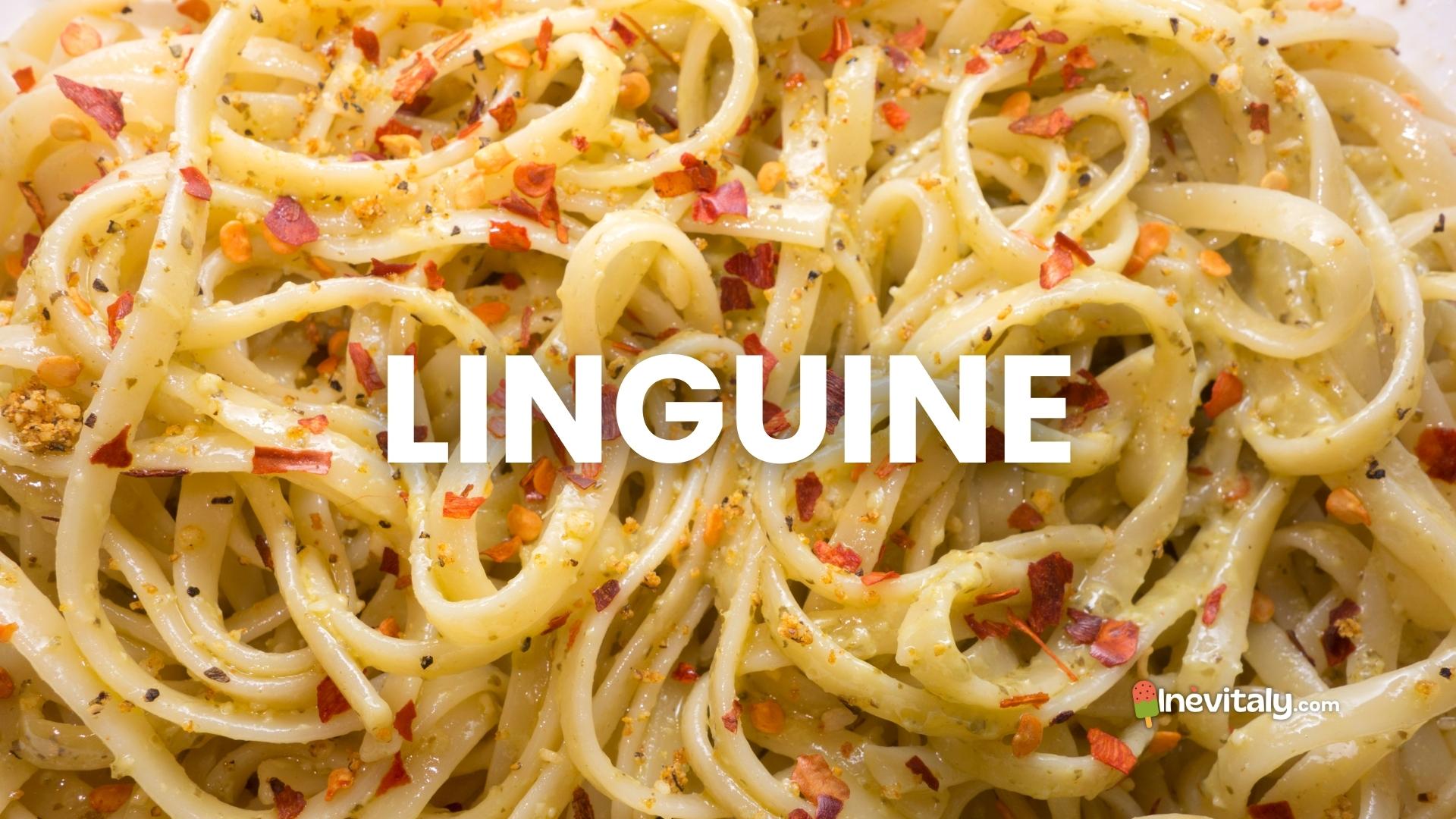
3) Tagliatelle — Tagliatelle is a traditional pasta from the Emilia-Romagna and Marche regions of Italy. It is long and flat, similar to fettuccine but typically narrower. Tagliatelle is well-known for being the perfect pasta to accompany rich and meaty sauces, most famously in dishes like Bolognese ragù.
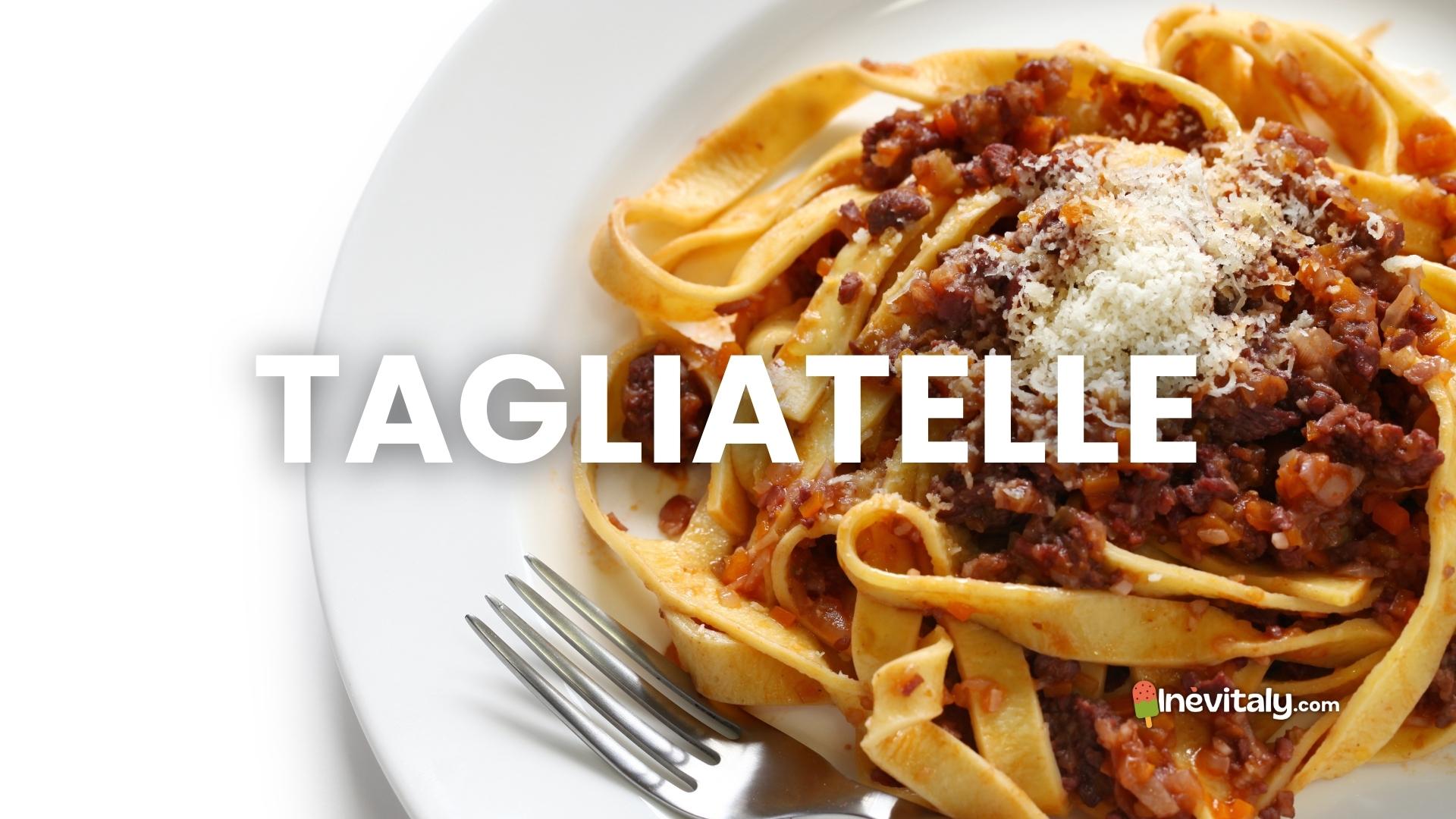
4) Fettuccine — Fettuccine is a ribbon-shaped pasta that originated in the central regions of Italy. The name "fettuccine" comes from the Italian word "fettuccia" which means "small ribbon". In the United States, fettuccine is commonly served with creamy Alfredo sauce...an Italian-American interpretation you will not find in Italy.
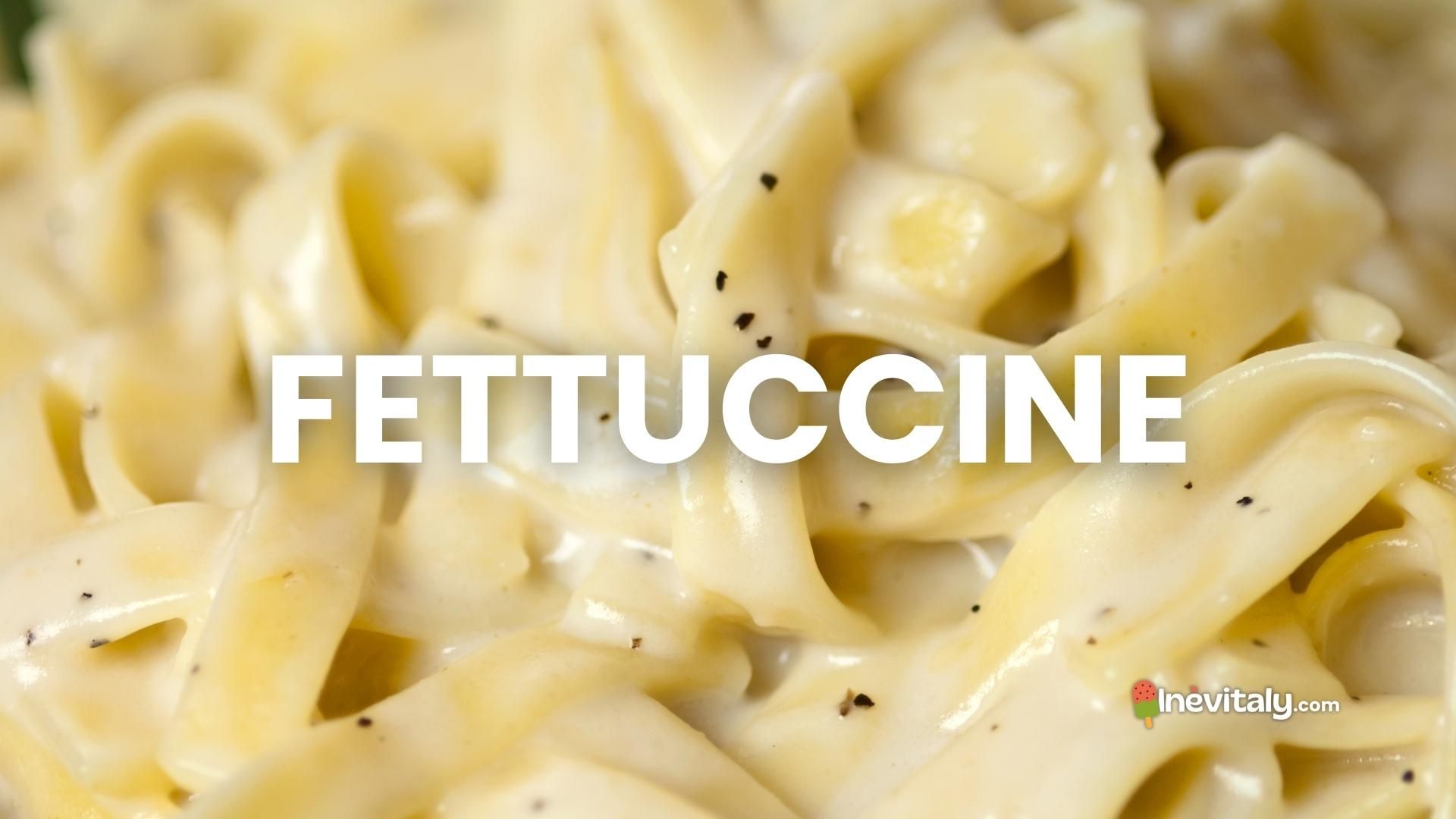
5) Pappardelle — Pappardelle is a wide and flat ribbon pasta that comes from Tuscany. Its broad shape makes it ideal for pairing with hearty sauces, often including game meats like wild boar or rabbit. The name "pappardelle" is derived from the Italian verb "pappare", which means "to gobble up" — a fitting name for such a delicious pasta.
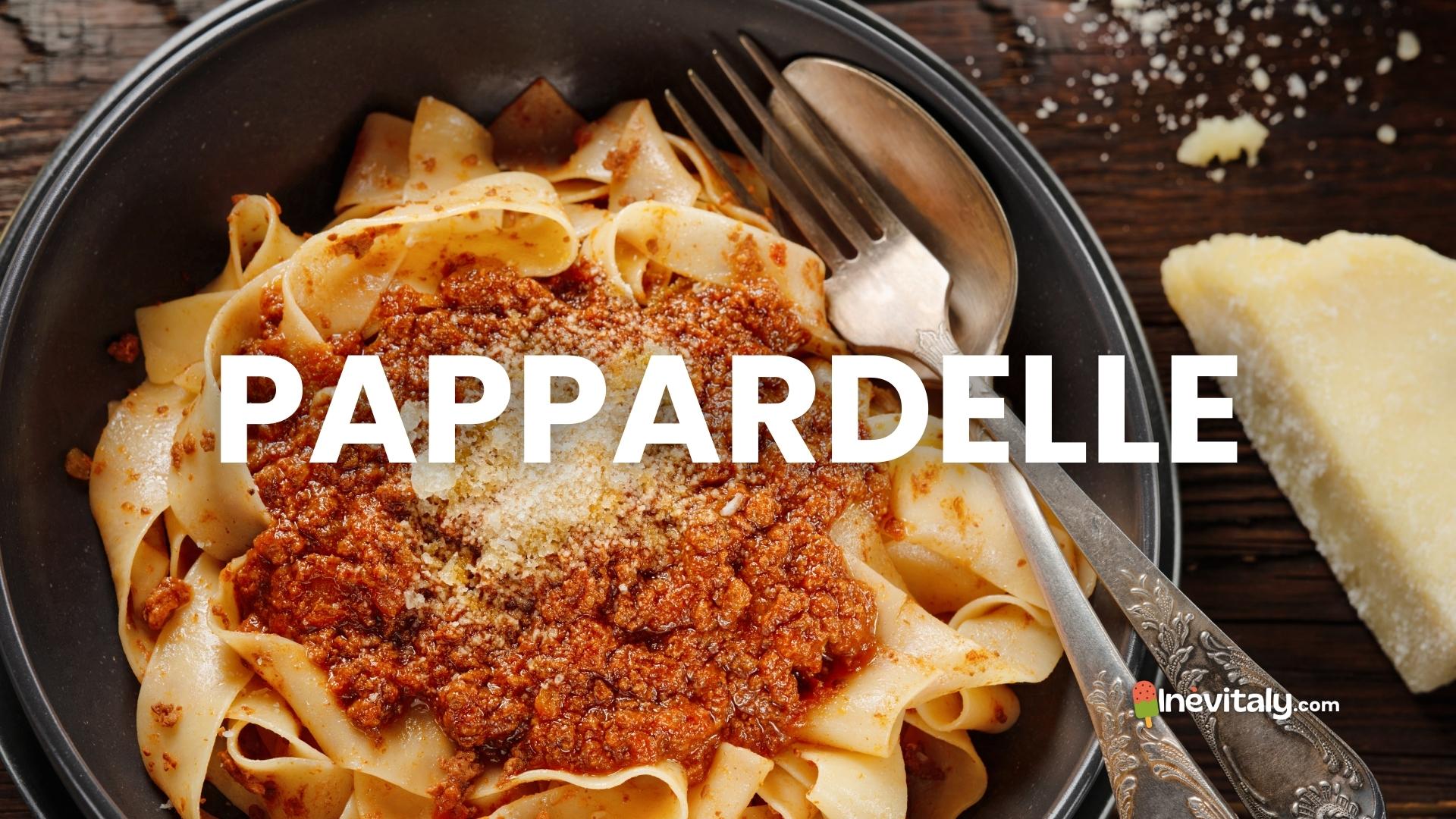
6) Lasagne — Lasagne, also known as lasagna, is a wide and flat pasta type that is one of the oldest known pasta shapes. It has roots in ancient Greece but became an iconic dish in Italy. Lasagne is used to create the beloved layered casserole dish of the same name, featuring pasta sheets, various sauces, and cheese, typically baked to perfection.
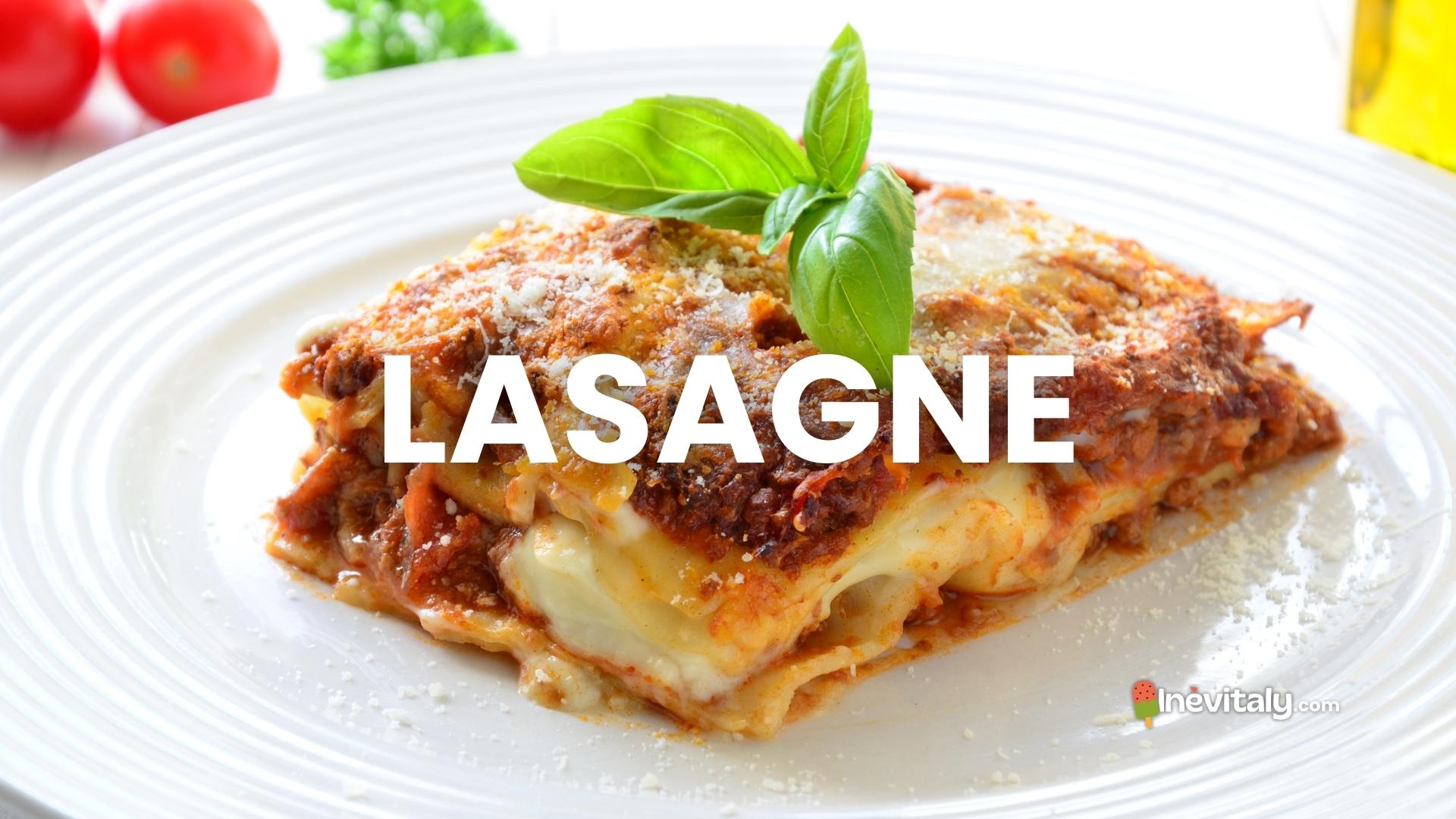
Tubular Pasta
7) Bucatini — Bucatini is a thick, straw-like pasta with a hollow center. It comes from the Lazio region of Italy, specifically Rome. The hollow core gives it a unique texture and allows sauces to seep inside, making every bite flavorful. Bucatini “cacio e pepe” — made with just cheese and black pepper — is now a very popular dish even outside of Italy.
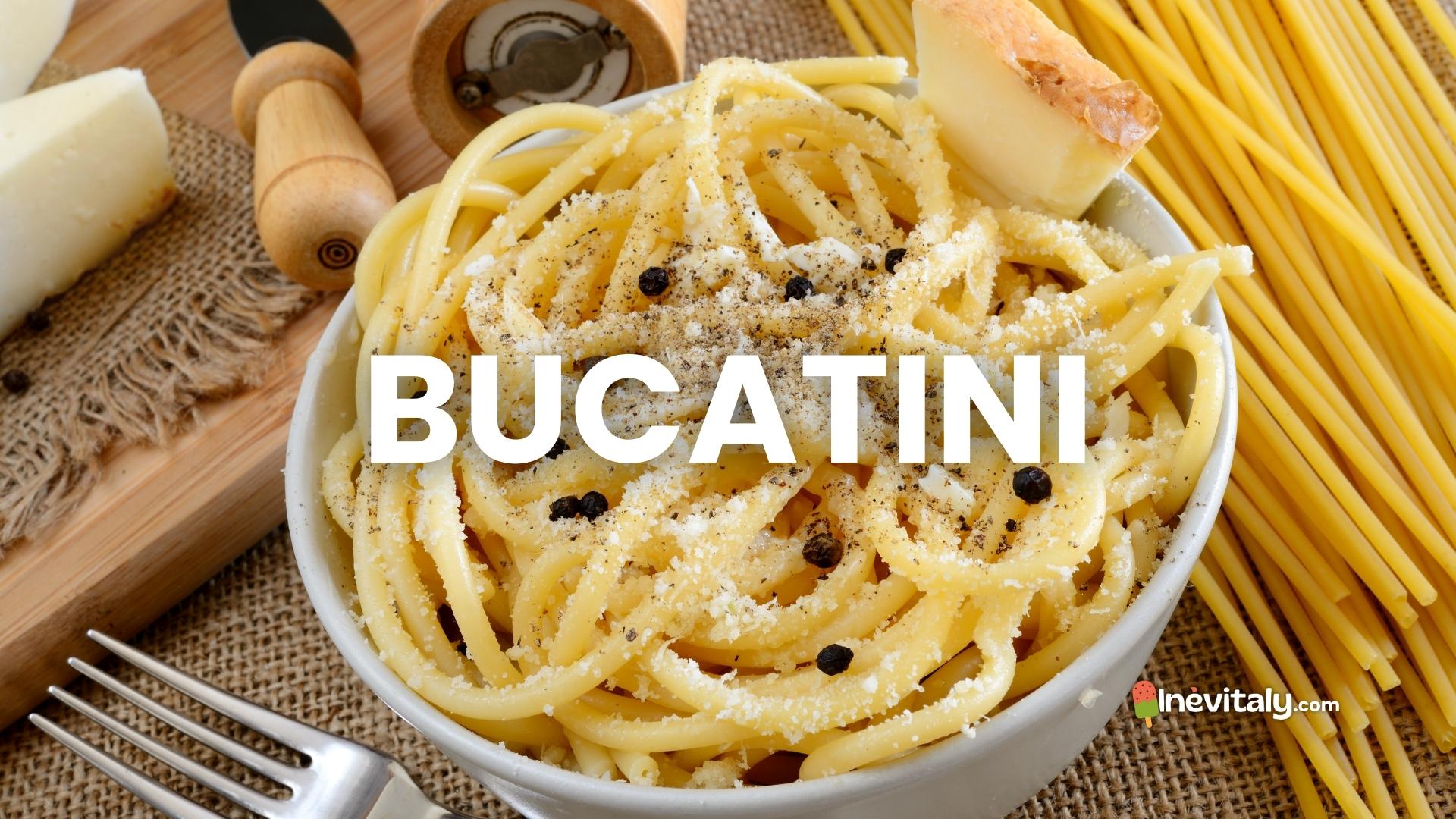
8) Cannelloni — Cannelloni are large cylindrical pasta tubes. The pasta is typically filled with a mixture of ricotta cheese, spinach, and sometimes meat, then topped with tomato sauce and baked. It's a warming and comforting dish.
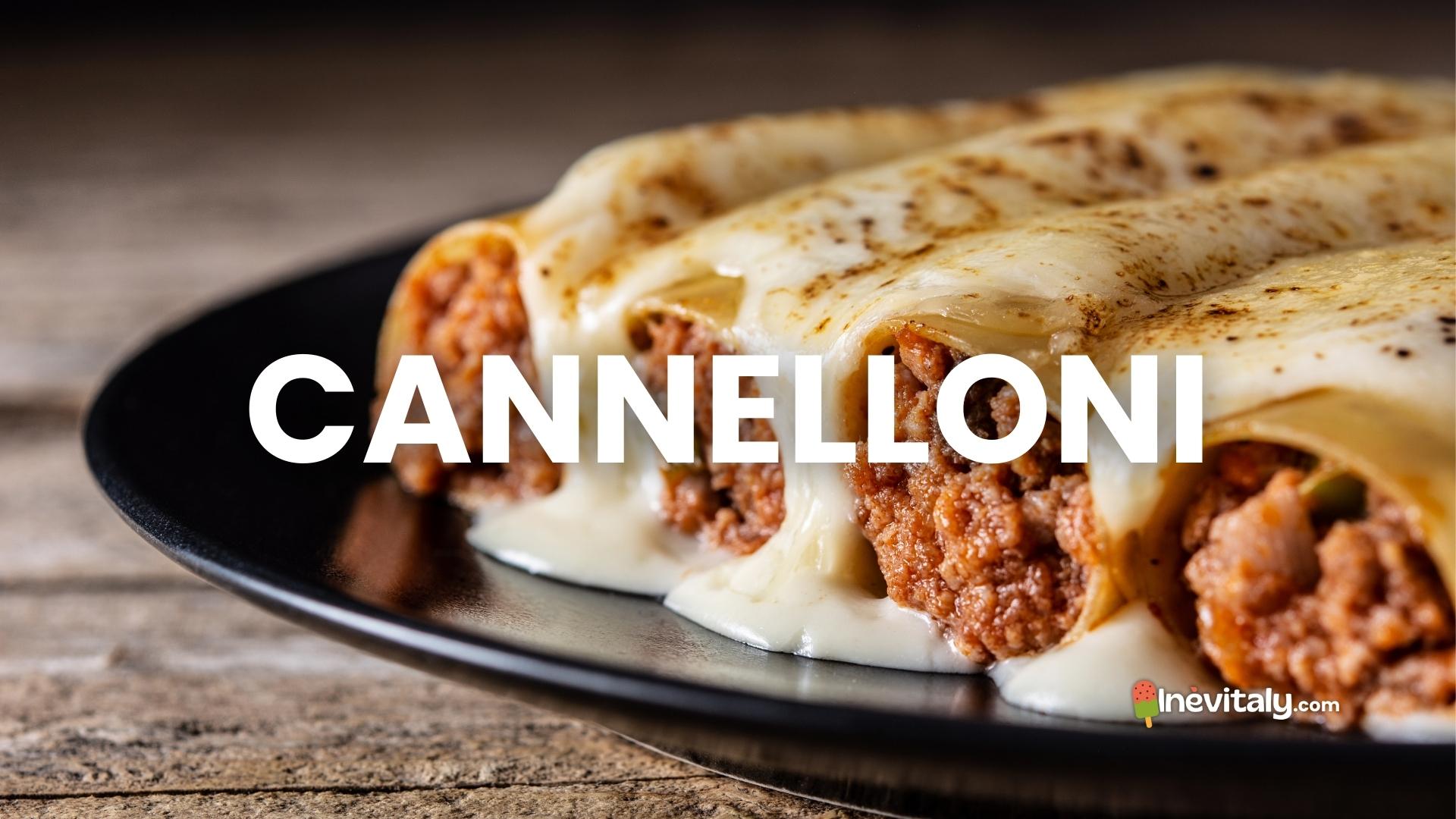
9) Garganelli — Garganelli is a tubular, ridged egg pasta type originating from the Emilia-Romagna region of Italy. Traditionally, it is made by rolling small squares of dough on a ridged board, creating a textured surface that holds sauces exceptionally well.
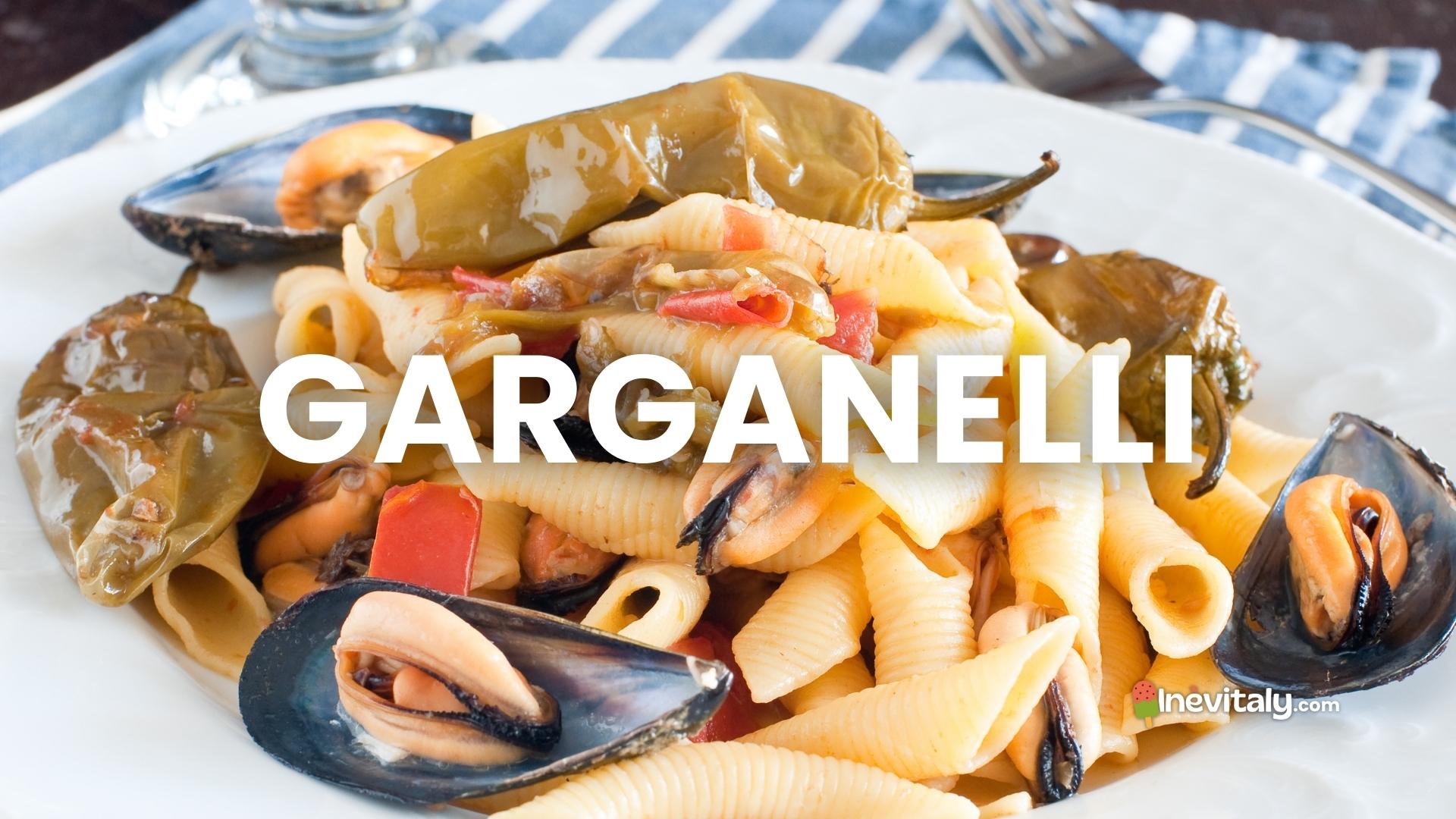
10) Maccheroni — Maccheroni is a tubular pasta variety that has been enjoyed in Italy for centuries. Its cylindrical shape and smooth texture make it versatile for various sauces, from simple tomato-based ones to more elaborate meat or cheese sauces.
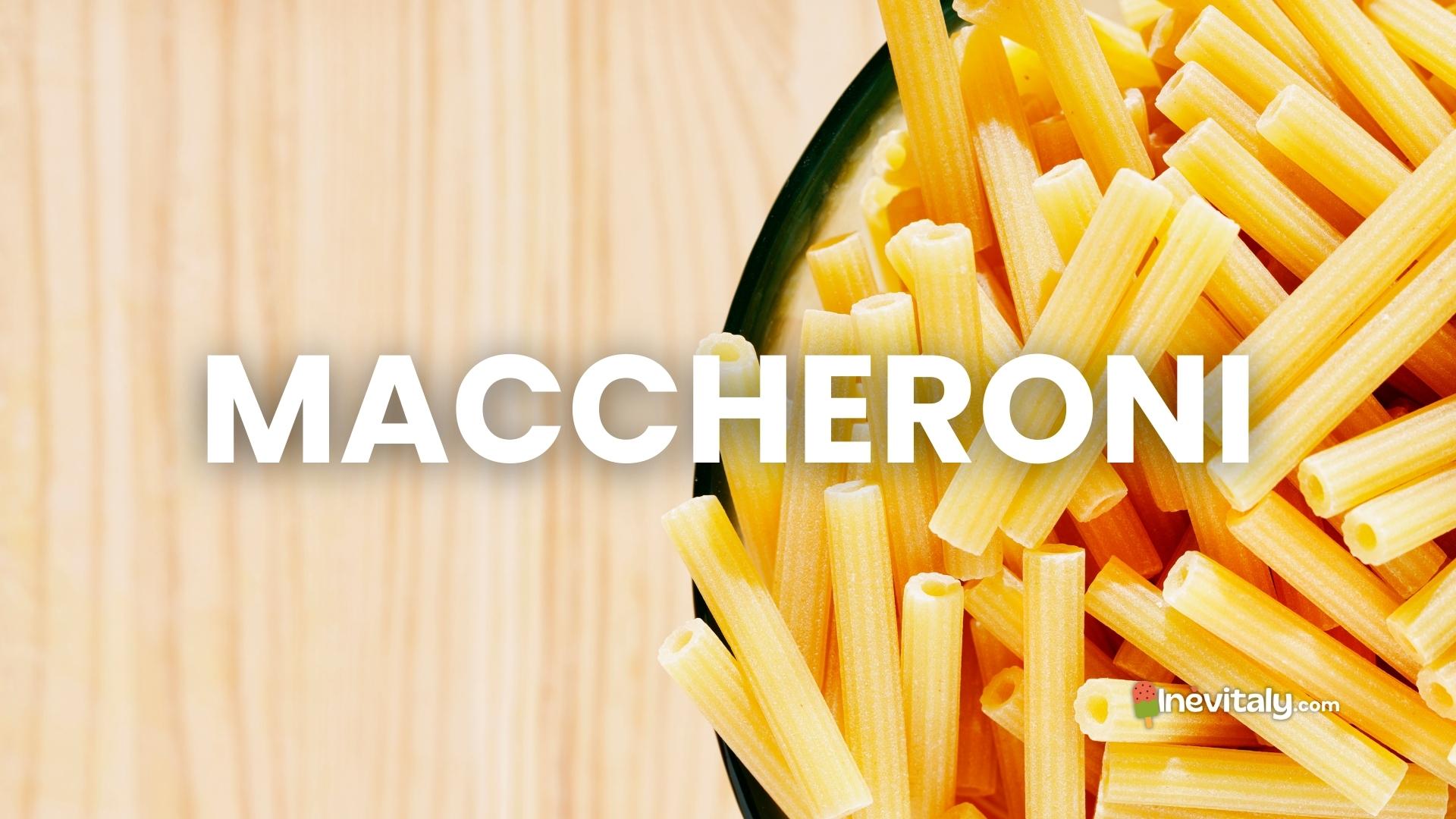
11) Maccheronicini — Maccheronicini are smaller versions of maccheroni, with a similar tubular shape. They are often served in soups or used in dishes where a smaller pasta size is preferred. Outside of Italy, they’re often used in “mac and cheese” (don’t try to order that while visiting Italy..!)
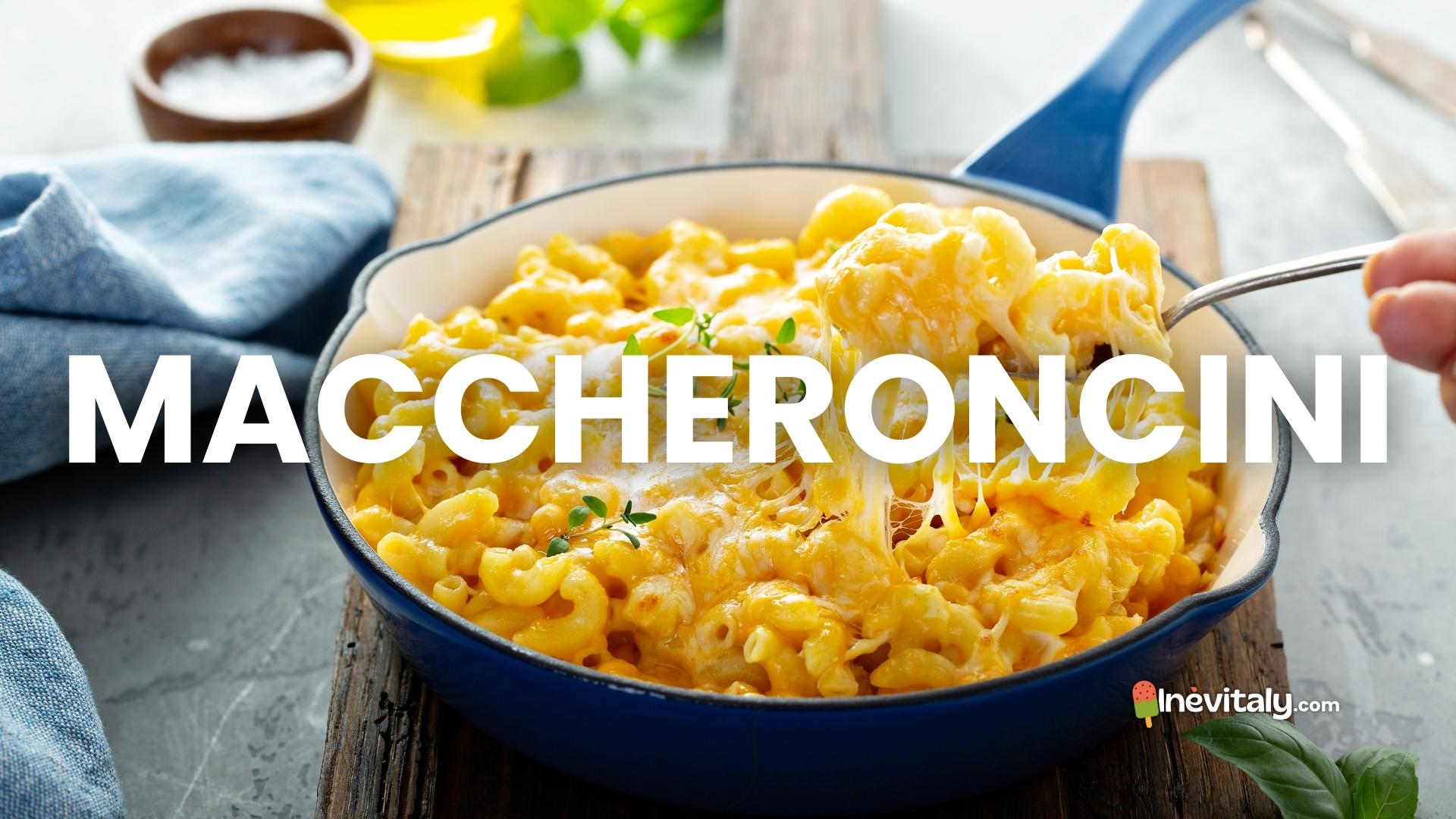
12) Penne rigate — Penne rigate are short, diagonal-cut pasta tubes with ridges on the surface. The name "penne" comes from the Italian word for "quills," which the pasta resembles. The ridges help sauces cling better to the pasta.
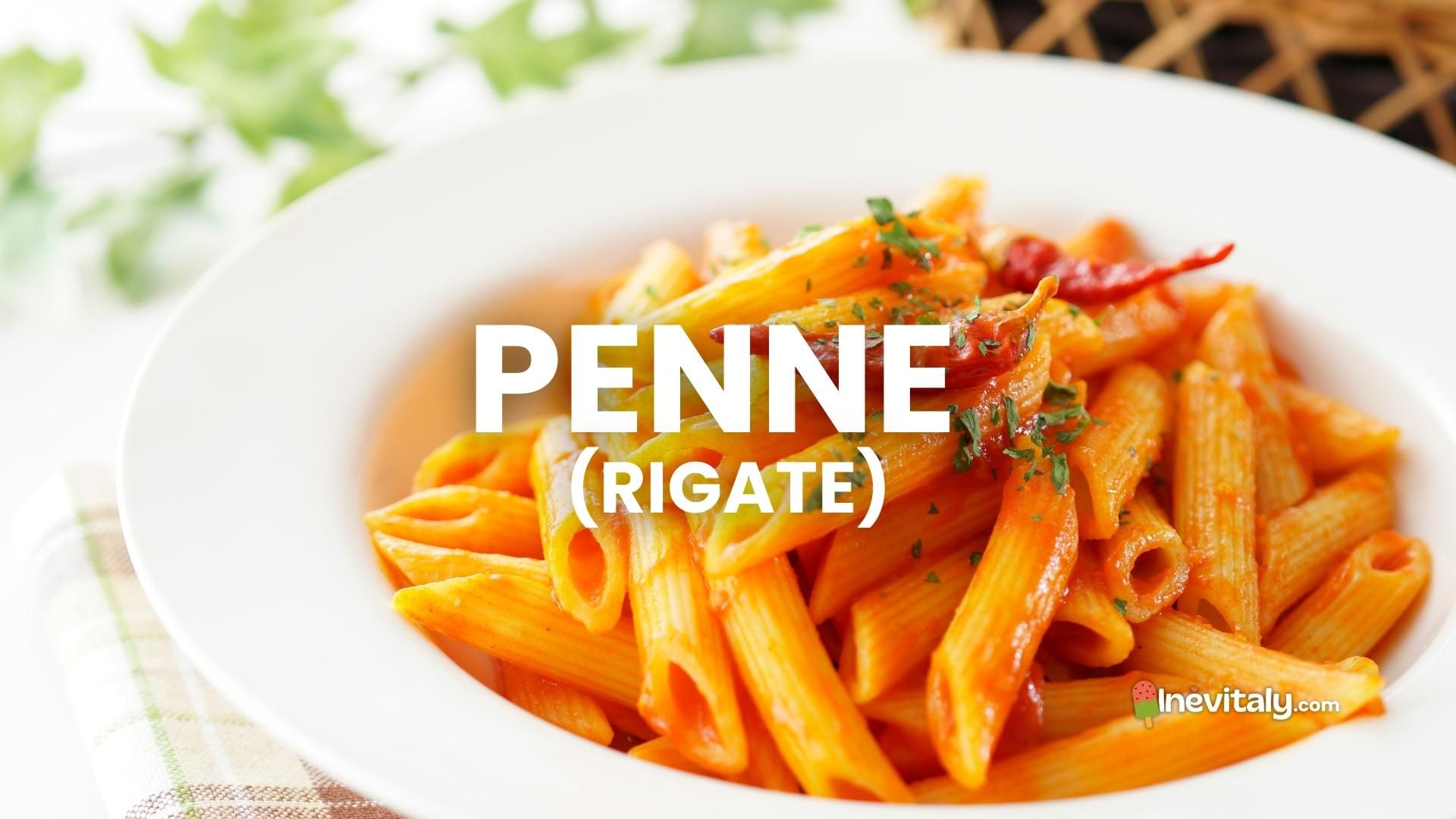
13) Penne lisce — Penne lisce are smooth, short pasta tubes similar to penne rigate but without the ridges. The name "lisce" means "smooth" in Italian. They are commonly used in baked pasta dishes and salads.
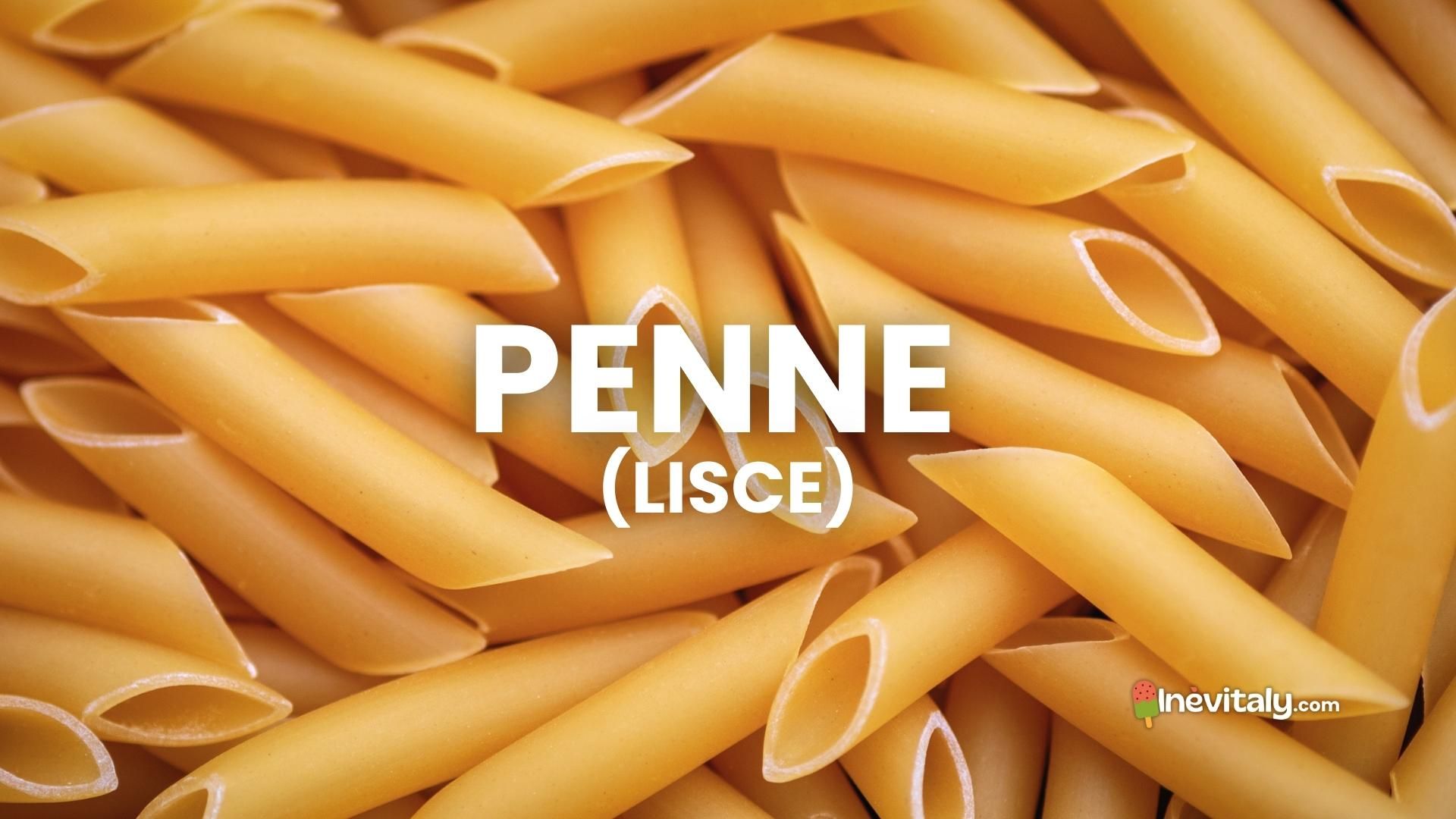
14) Rigatoni — Rigatoni are large, ribbed pasta tubes with straight edges. The name "rigatoni" comes from the Italian word "rigato", meaning "ridged". The ridges and wide opening make them perfect for holding robust sauces.
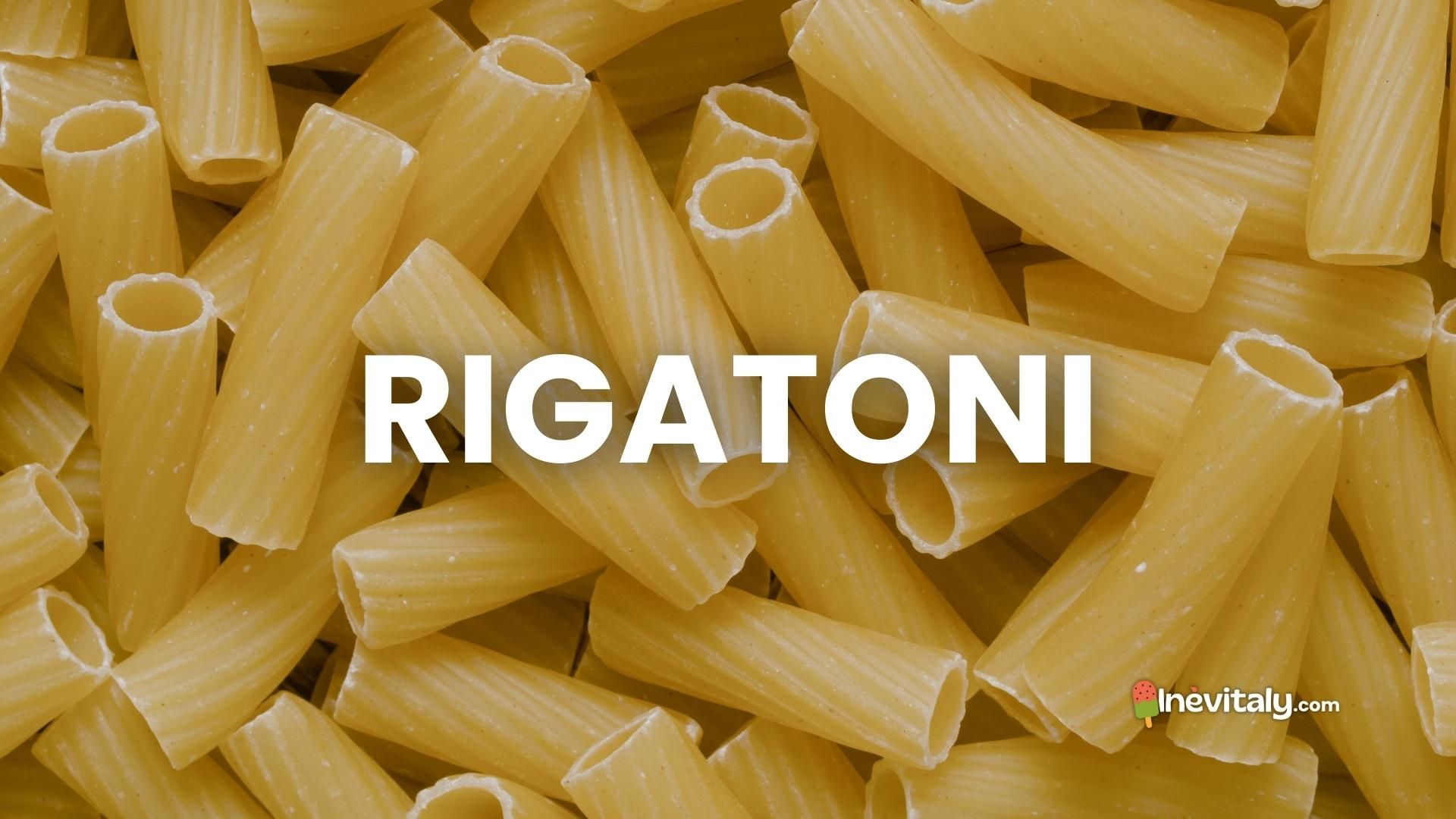
Short Pasta
15) Farfalle — Farfalle, often referred to as bow-tie pasta, is a butterfly or bow-shaped pasta variety. It is popular in Italian cuisine and pairs well with light, creamy sauces or simple olive oil and herb-based dressings. The name "farfalle" literally means "butterflies" in Italian.
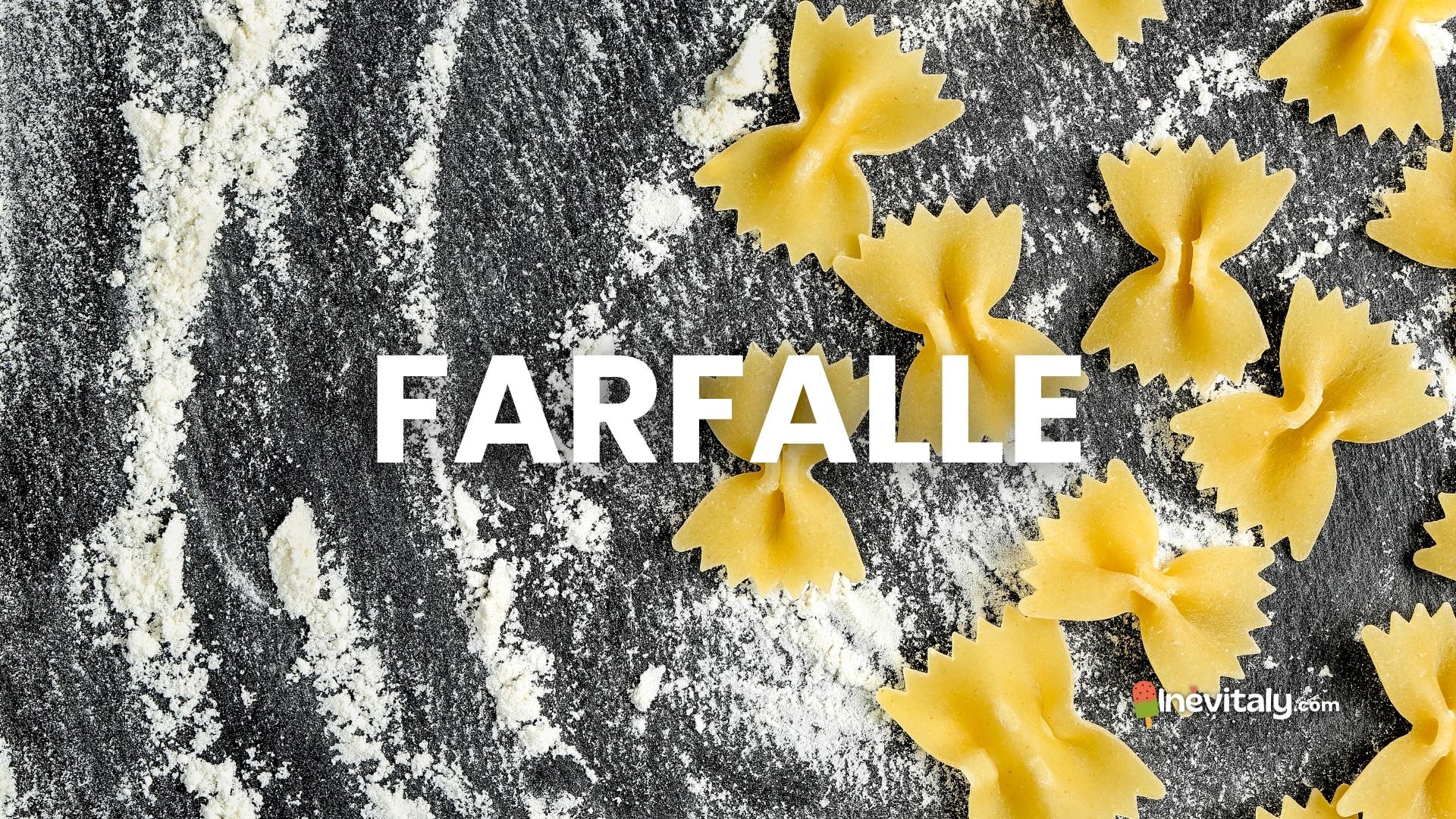
16) Fusilli — Fusilli are spiral-shaped pasta with deep grooves. This corkscrew-like pasta is great for holding onto chunky sauces and vegetables. It is a versatile pasta type commonly used in pasta salads and baked dishes.
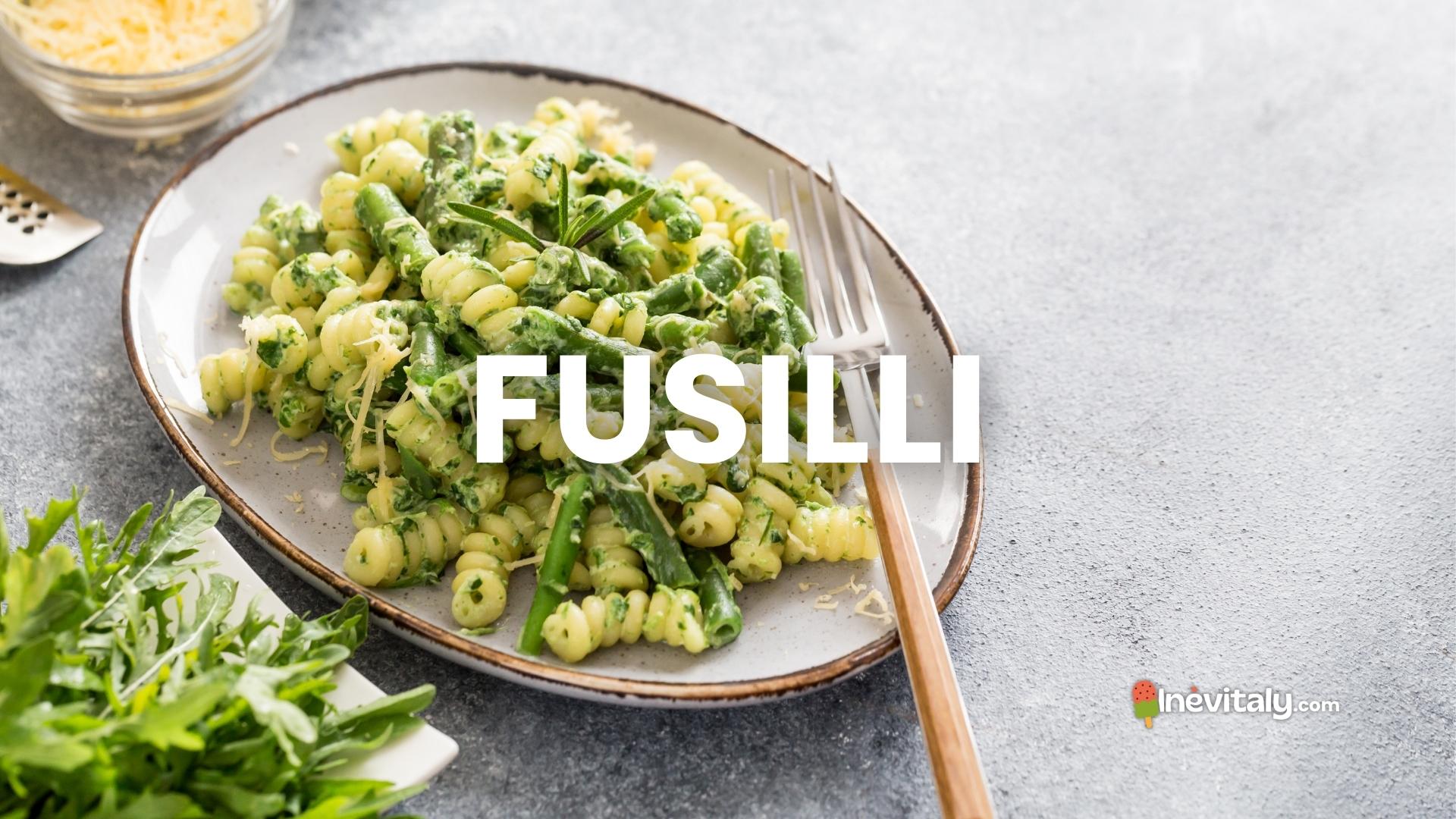
17) Conchiglie — Conchiglie, also known as shells, is a shell-shaped pasta with ridges on the outer surface. The name "conchiglie" actually means "shells" in Italian. The unique shape makes it perfect for catching and holding onto sauces.
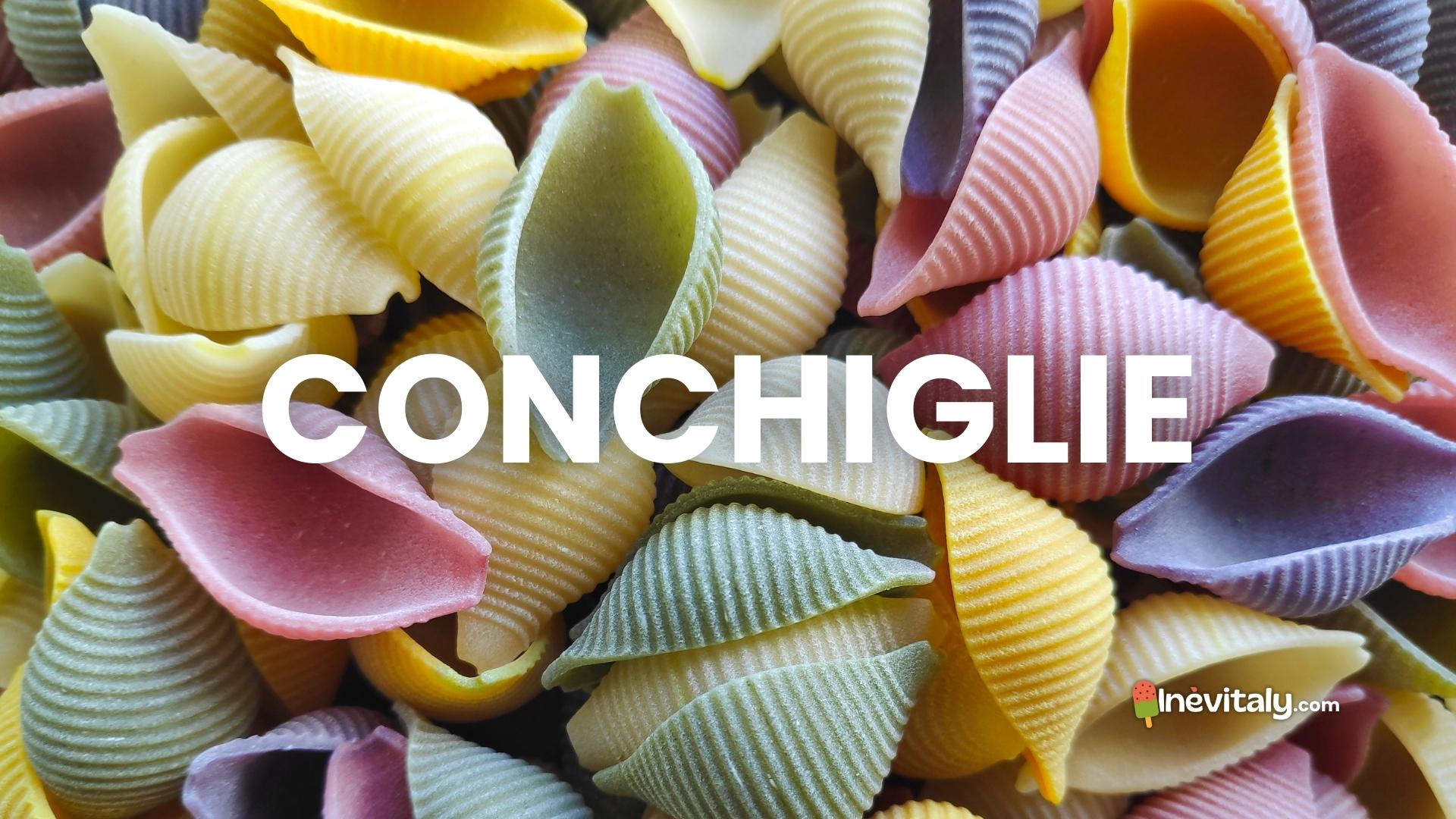
18) Gemelli — Gemelli is a twisted pasta variety resembling two strands of pasta twisted together. Its name comes from the Italian word for "twins", as it looks like two pieces joined. Gemelli works well with a wide range of sauces and is popular in pasta salads.
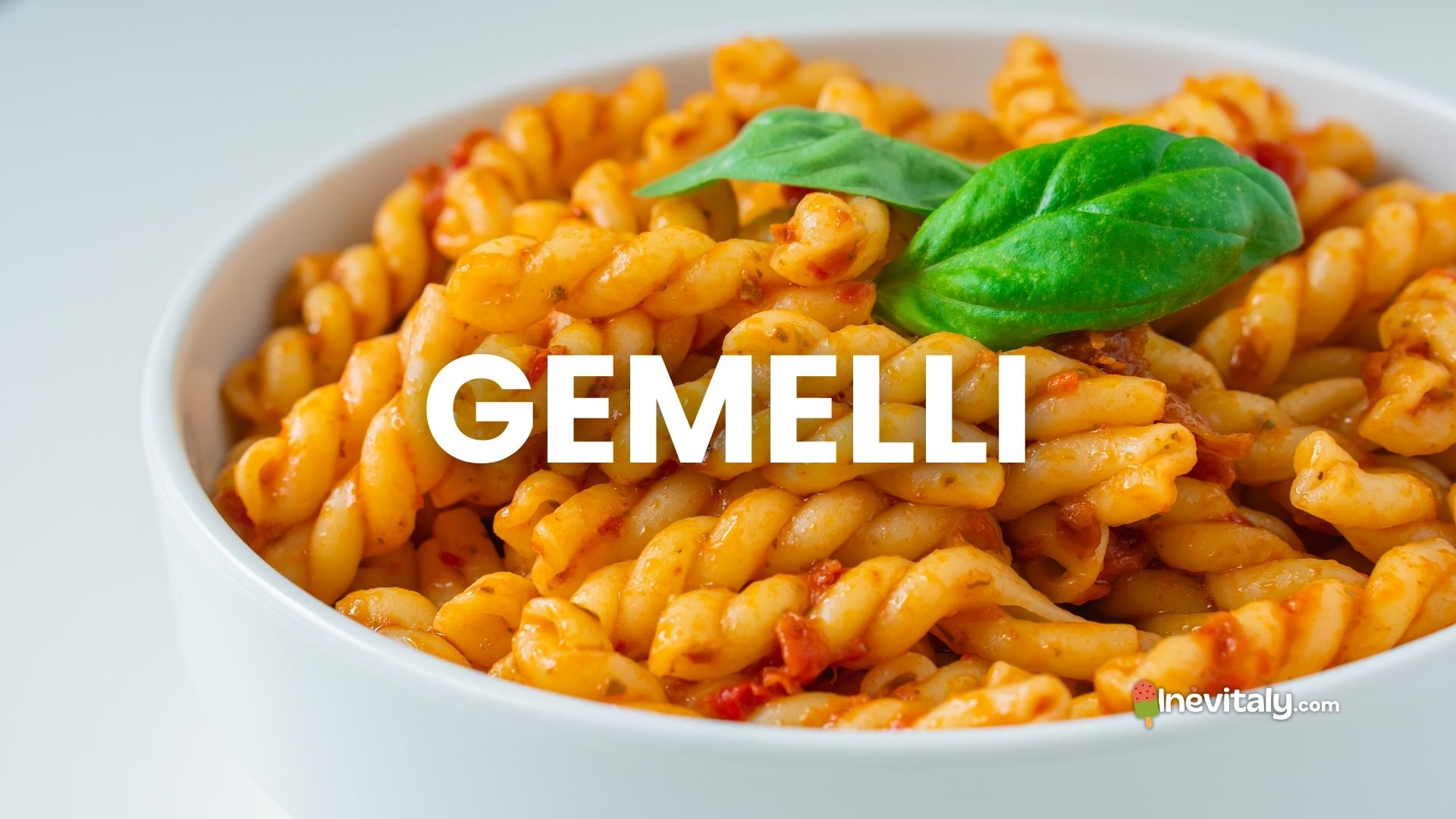
19) Gnocchetti sardi — Gnocchetti sardi, also known as Malloreddus, is a small, ridged pasta shape originating from Sardinia, Italy (hence, "sardi"). The ridges and curled shape help it hold onto sauces and flavors effectively.
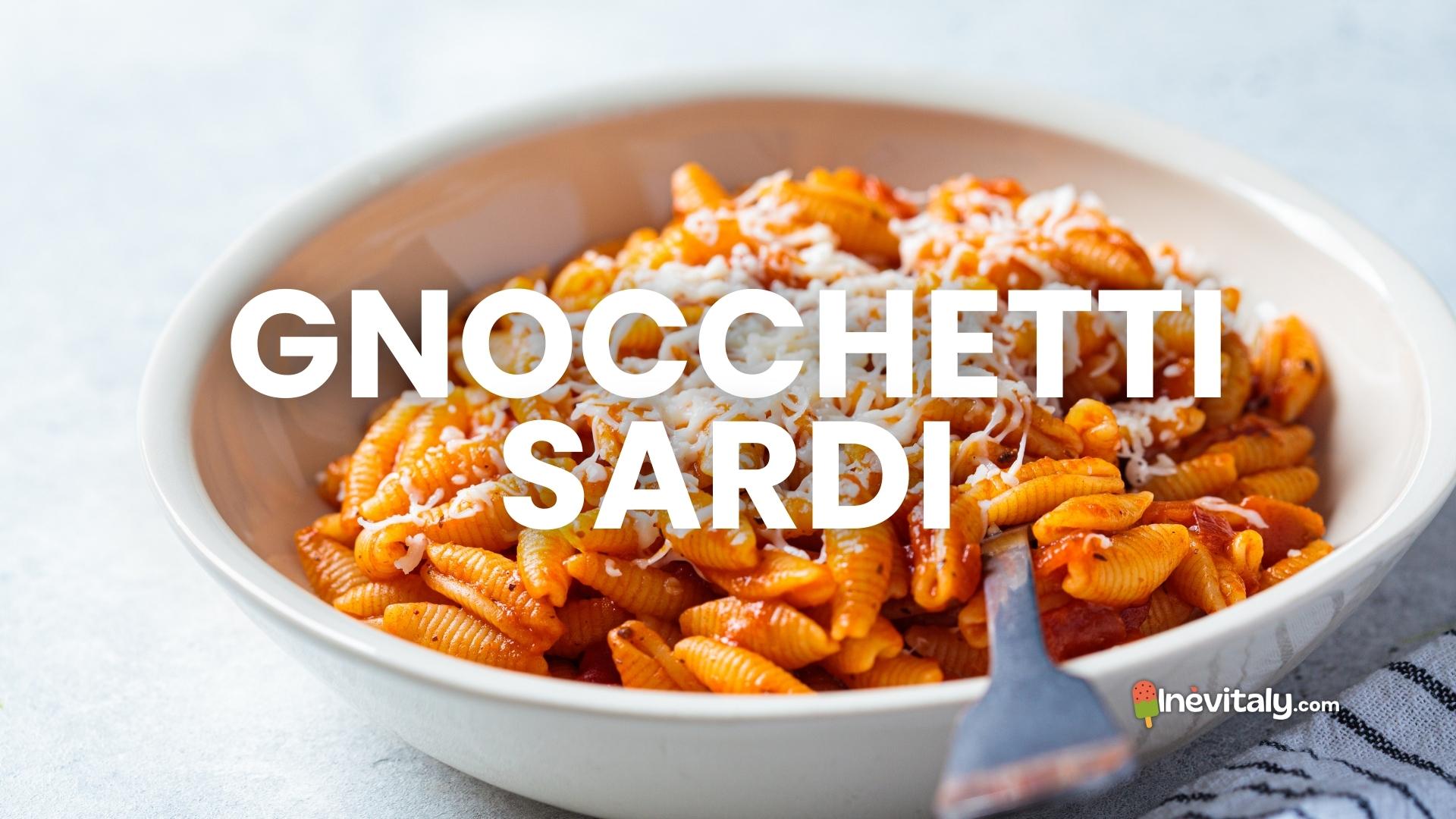
20) Lumache — Lumache, meaning "snails" in Italian, is a shell-shaped pasta with a wide opening and a ridged exterior. It is often used in baked pasta dishes, as well as in soups.
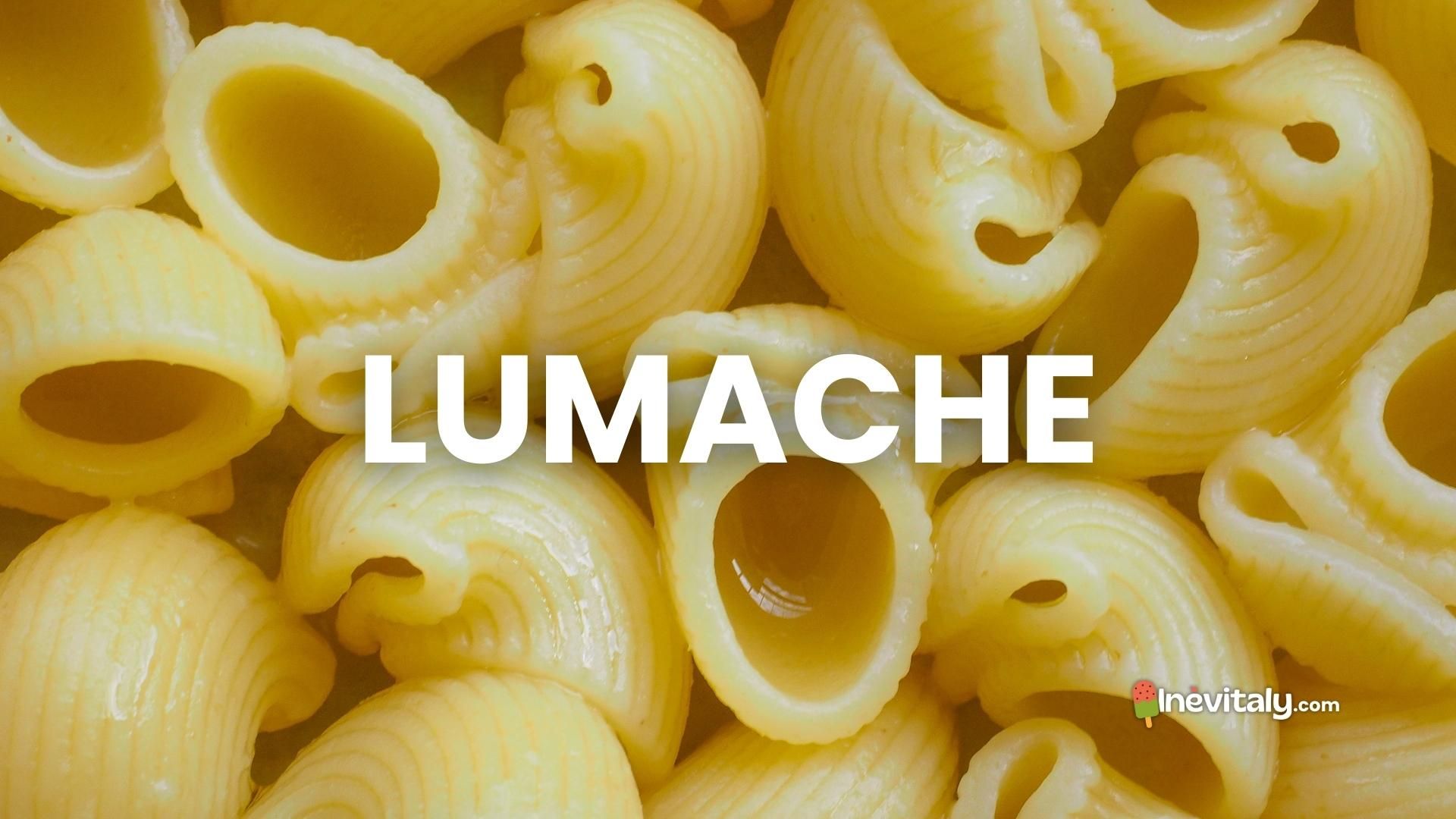
21) Maltagliati — Maltagliati literally means "badly cut" or "irregularly shaped" in Italian. It is a type of pasta made from the excess dough trimmed when making other pasta shapes, resulting in various sizes and shapes. Despite the irregular appearance, it is delicious and versatile.
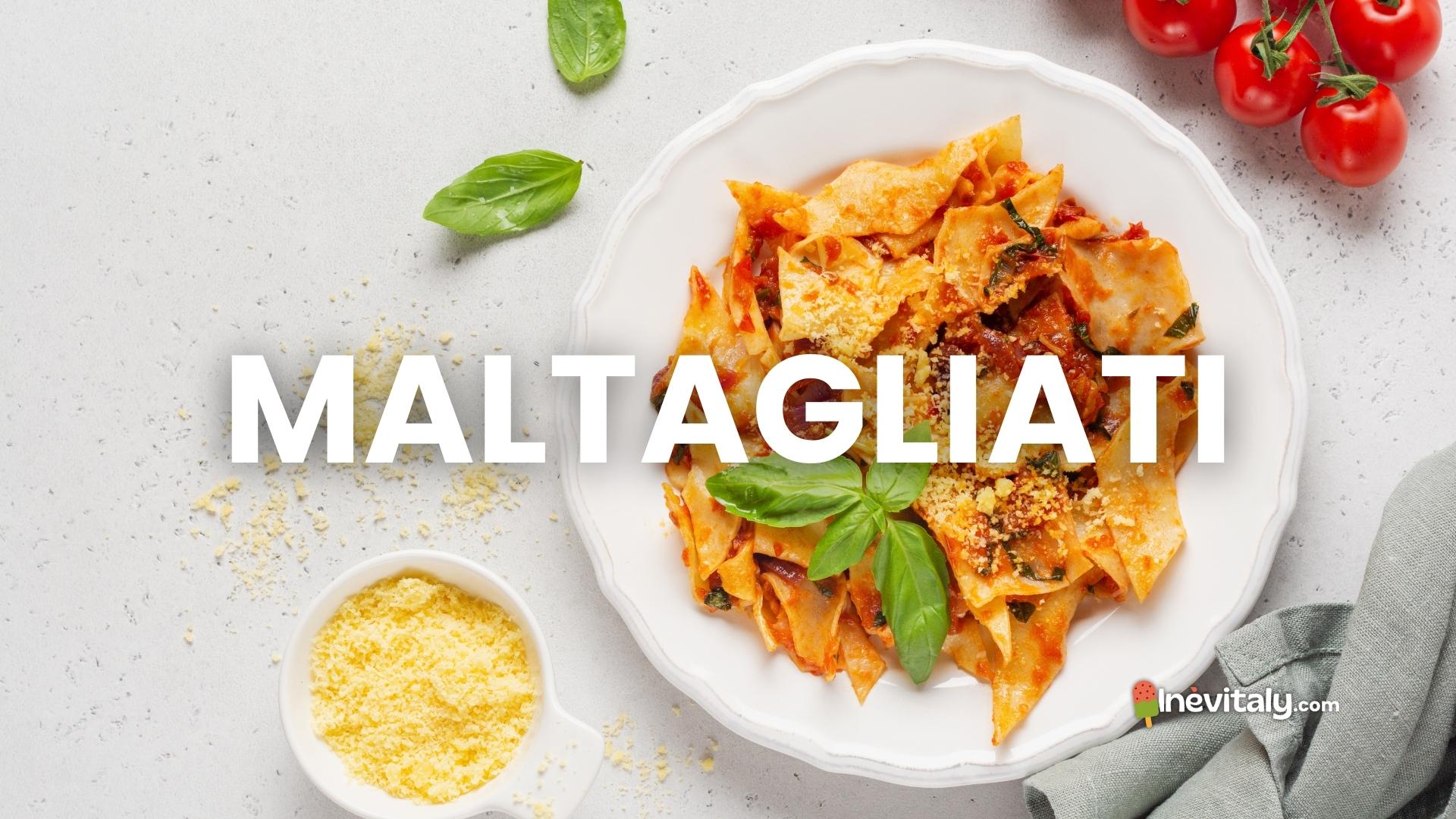
22) Orecchiette — Orecchiette means "little ears" in Italian, owing to its small, concave shape. Originating from the Puglia region, it is often served with broccoli rabe and sausage.
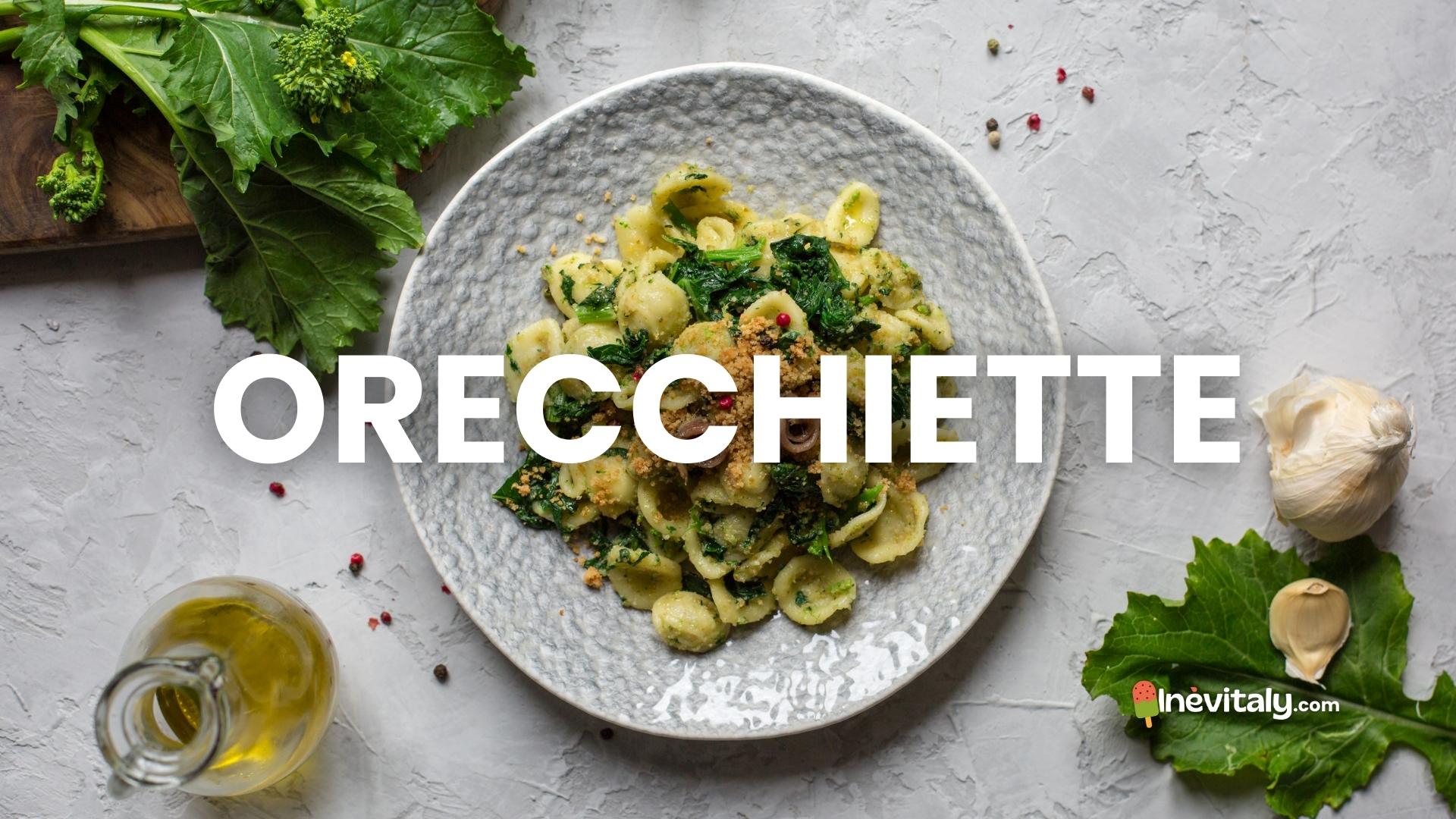
23) Strozzapreti / Strangolapreti — Strozzapreti or Strangolapreti are one of the most strangely named of all pastas, literally meaning "priest stranglers", and are elongated, hand-rolled pasta shapes. The name is said to come from the idea that these delicious pasta shapes were so irresistible that even priests would eat them so quickly they could "choke" on them.
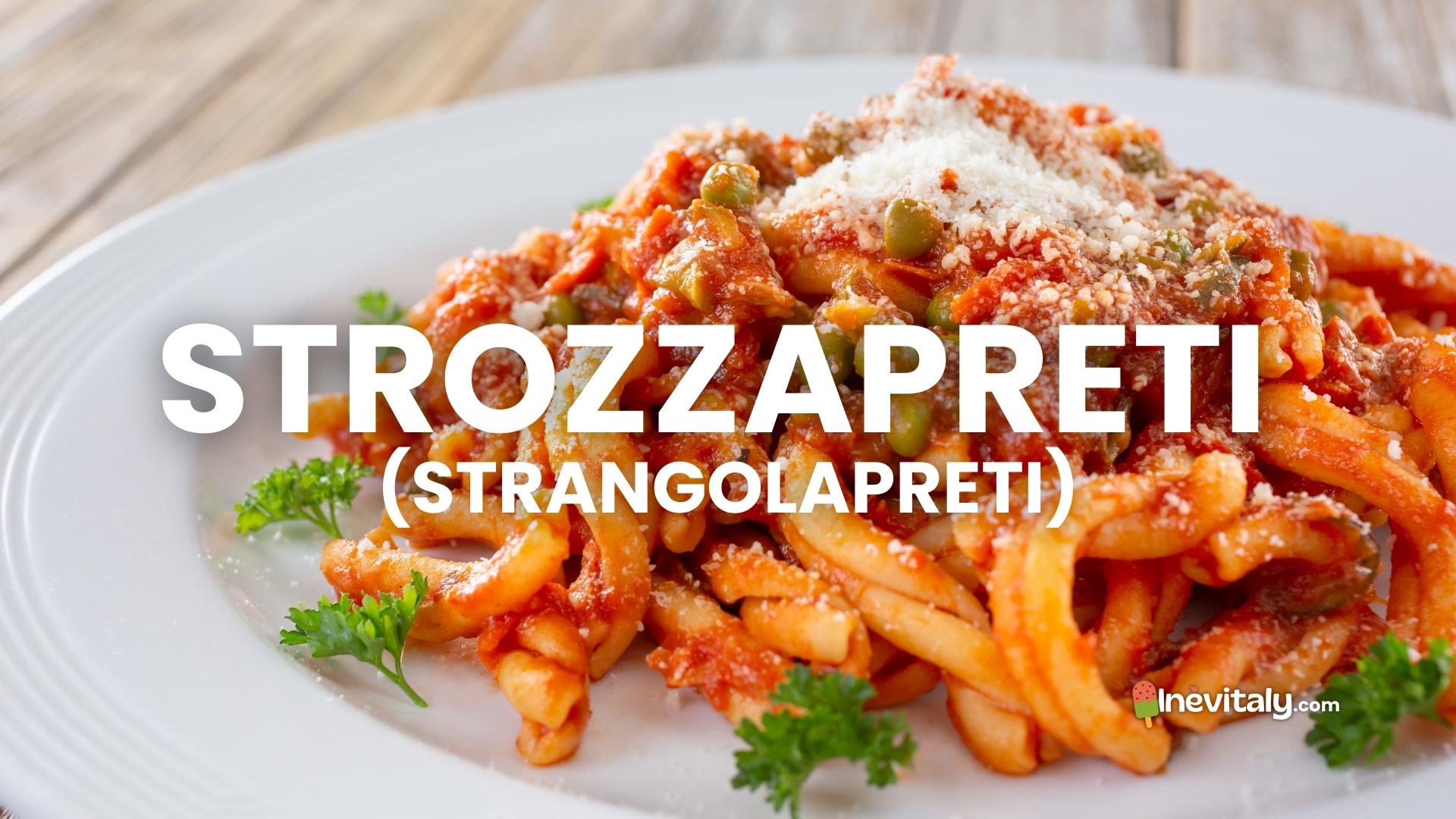
Filled Pasta
24) Agnolotti — Agnolotti are small, square-shaped pasta pockets filled with various fillings, such as meat, cheese, or vegetables. They are a specialty of the Piedmont region in Italy.
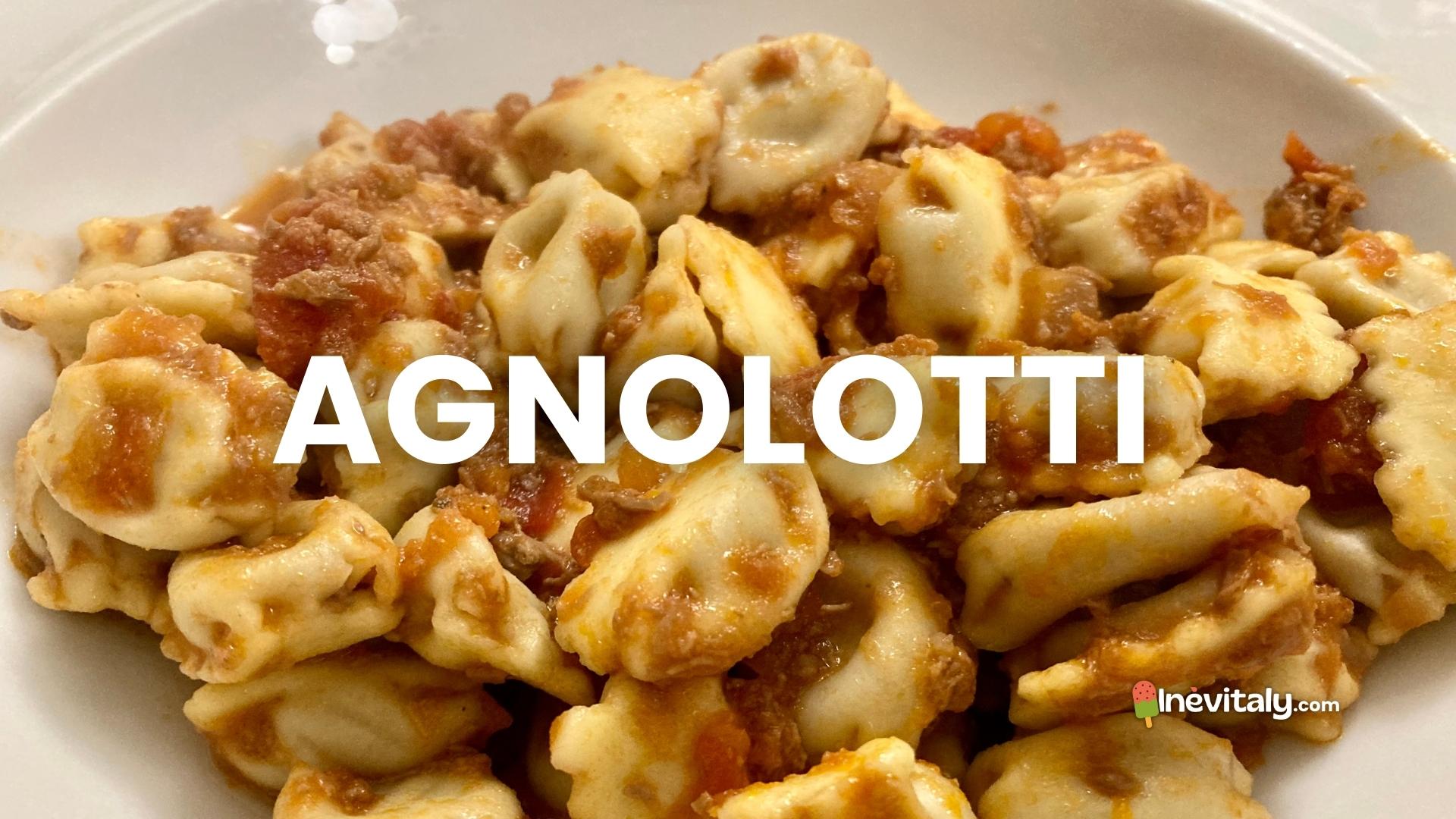
25) Cappelletti — Cappelletti, meaning "little hats" in Italian, are small, hat-shaped pasta with a folded edge. They are often served in broth-based soups.
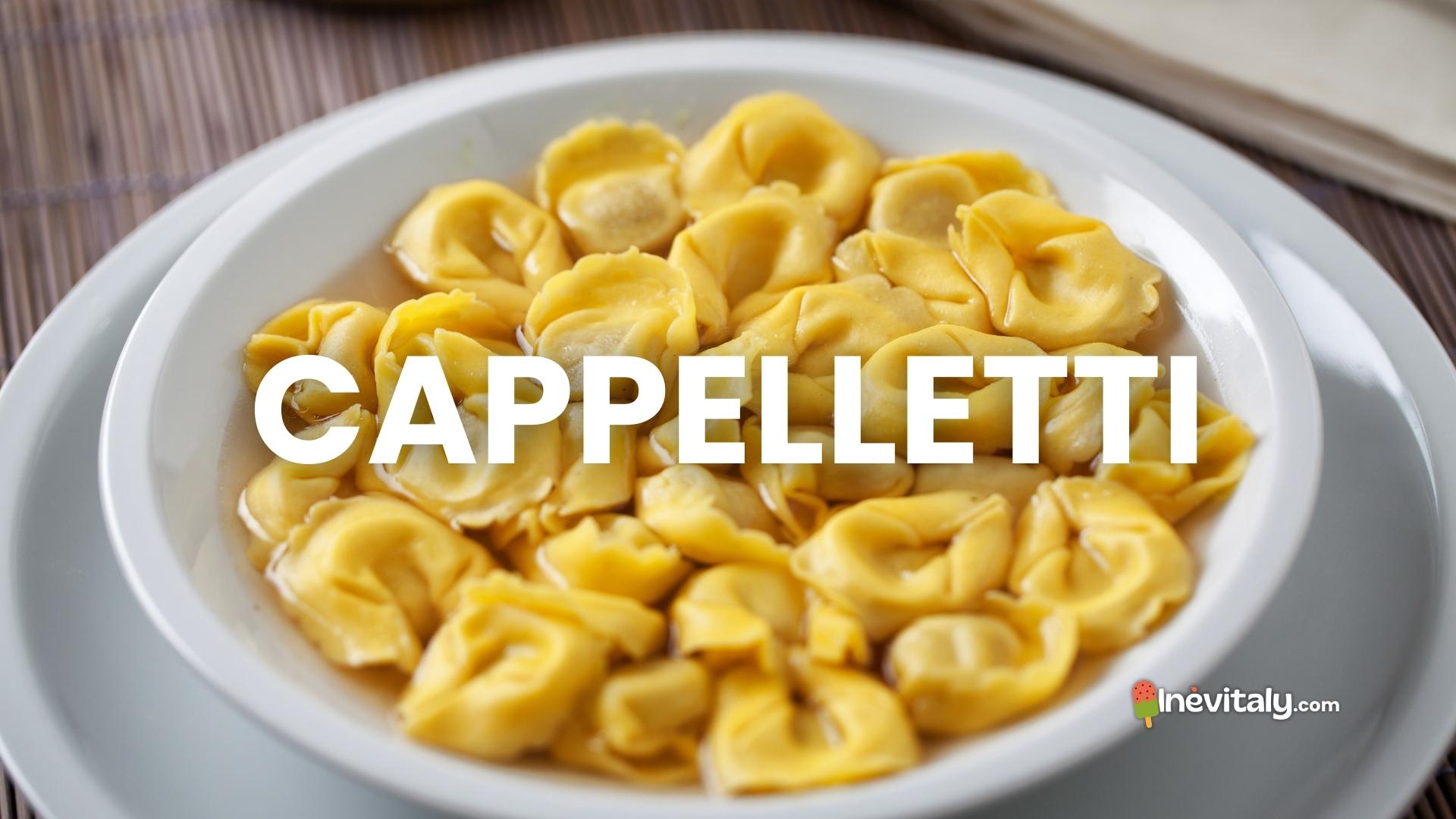
26) Casoncelli — Casoncelli are a stuffed pasta variety originating from Lombardy, Italy. This is the pasta of my home region and closest to my heart. They are typically filled with a mixture of meats, cheese, breadcrumbs, and spices, creating a unique and flavorful pasta dish.
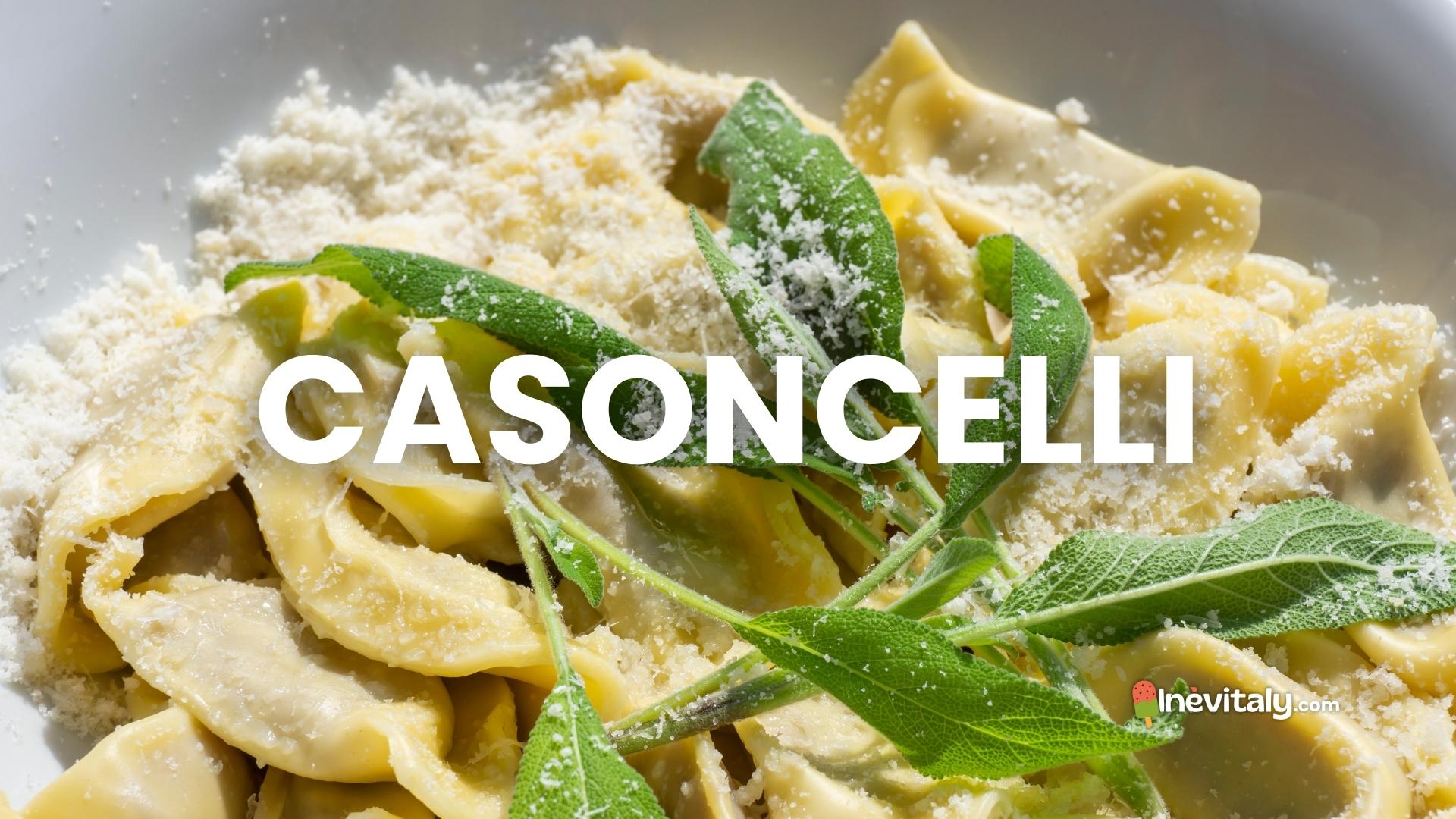
27) Caramelle — Caramelle, meaning "candy" in Italian, is a pasta variety with a folded shape that resembles wrapped candies. They are often filled with cheese or other delectable ingredients.
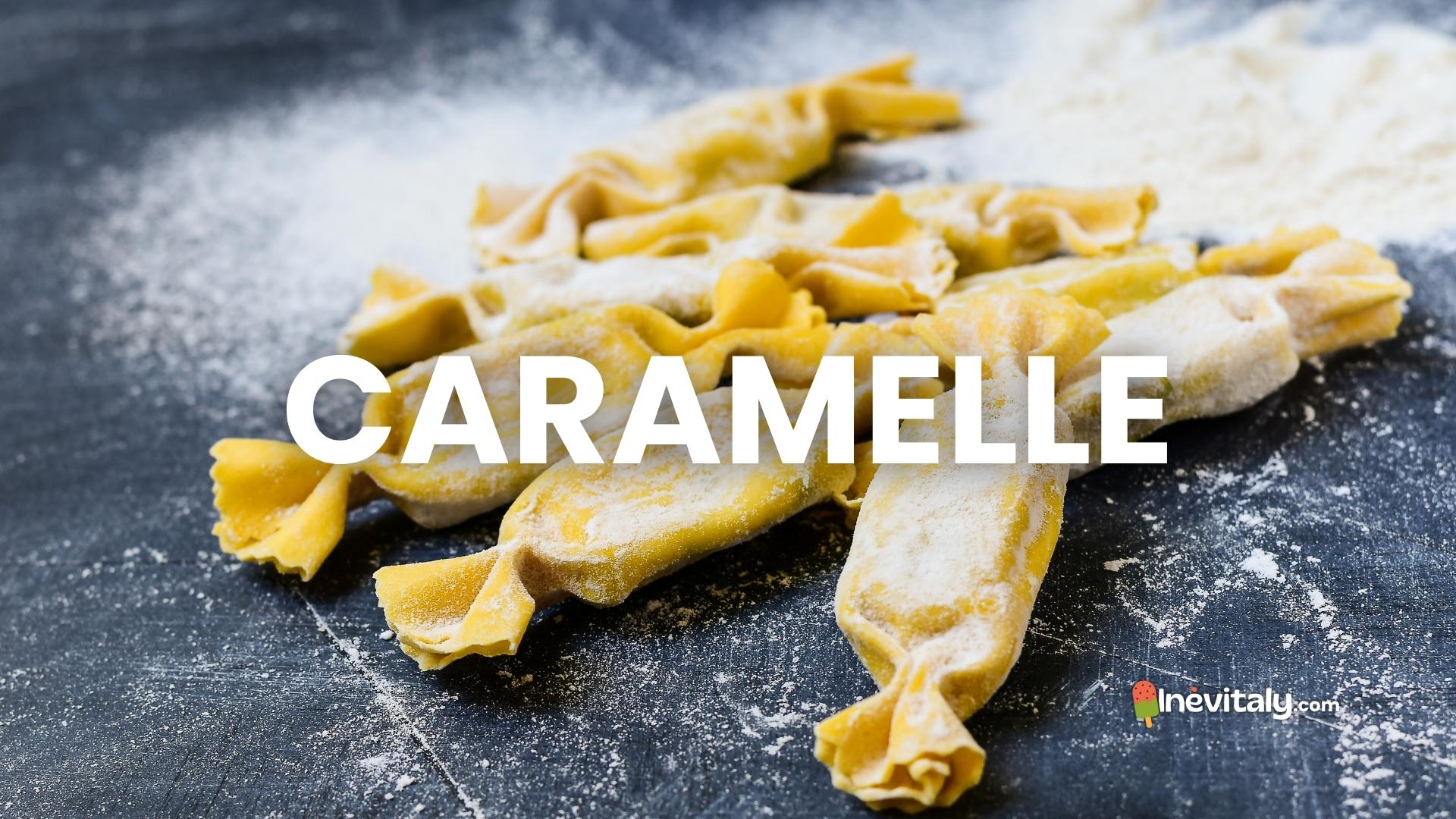
28) Ravioli — Ravioli are square or circular pockets of pasta filled with various ingredients. They are a popular pasta type worldwide, and the fillings can range from meat and cheese to vegetables and seafood.
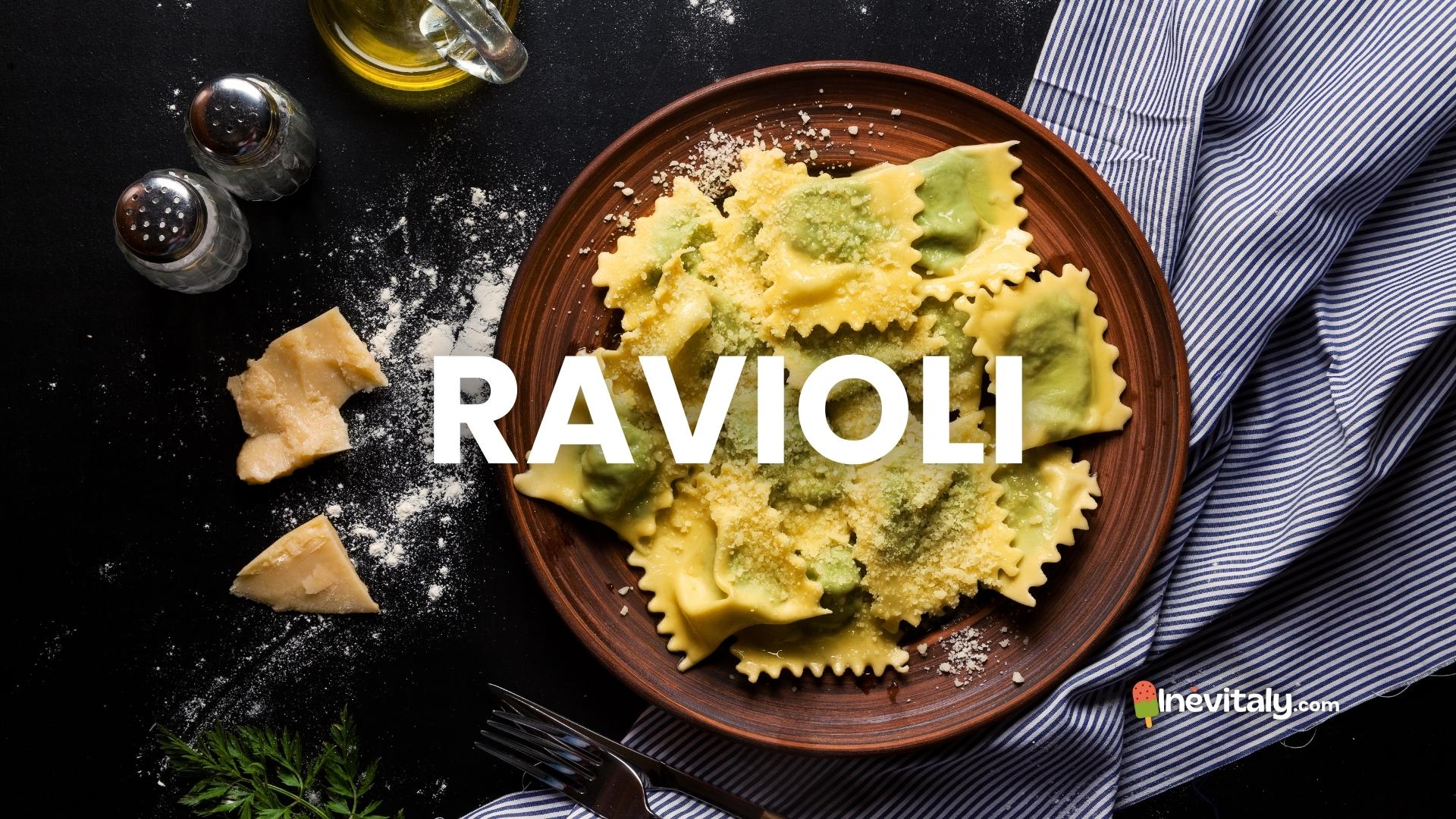
29) Mezzelune — Mezzelune means "half-moons" in Italian, referring to their half-moon shape. These filled pasta pockets are commonly served with creamy sauces or simple melted butter and sage (my favorite!)
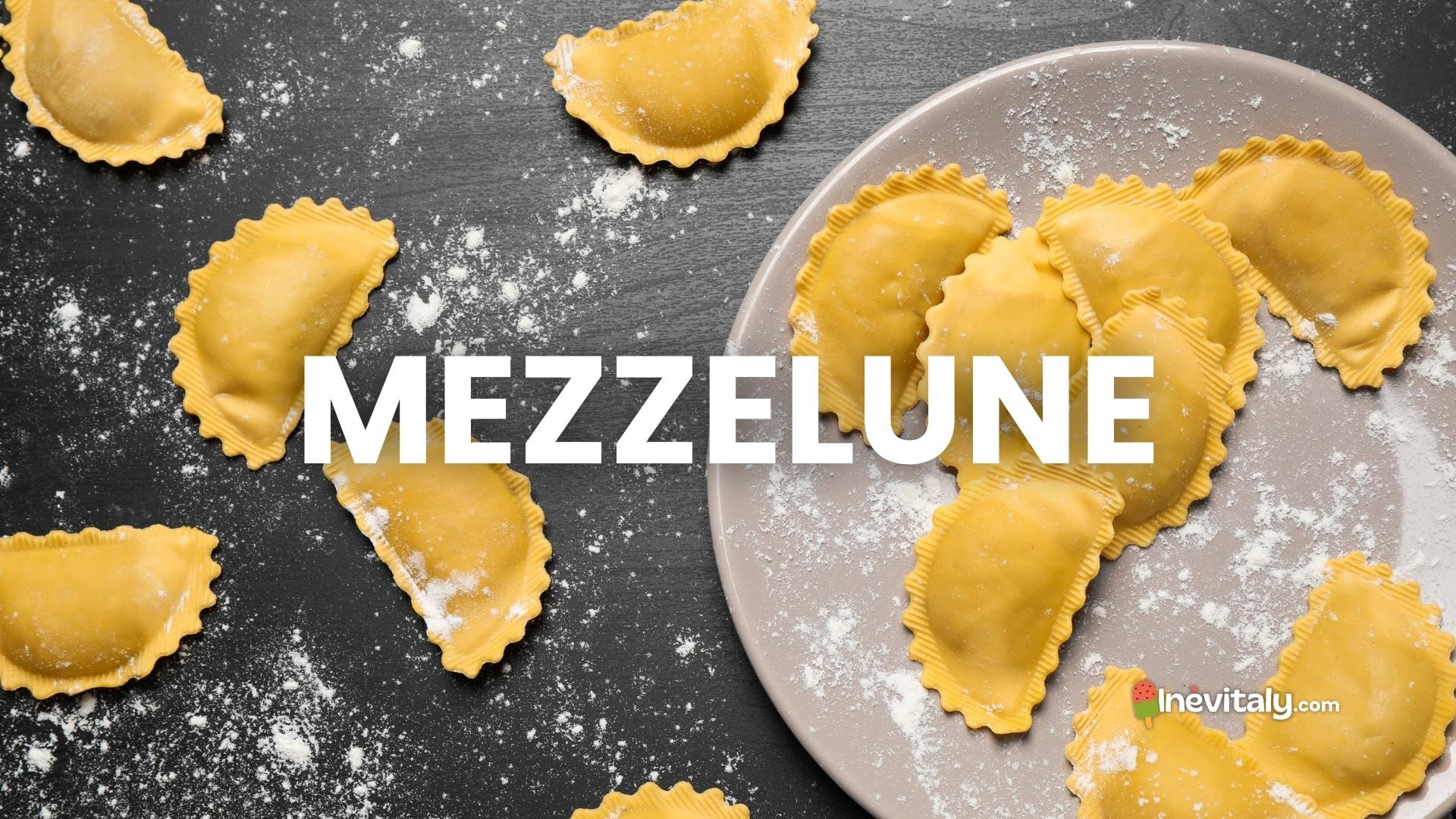
30) Tortellini — Tortellini are small, ring-shaped pasta filled with a mixture of meat, cheese, or vegetables. They are a beloved pasta type from the Emilia-Romagna region, where they are often served in broths or with cream-based sauces.
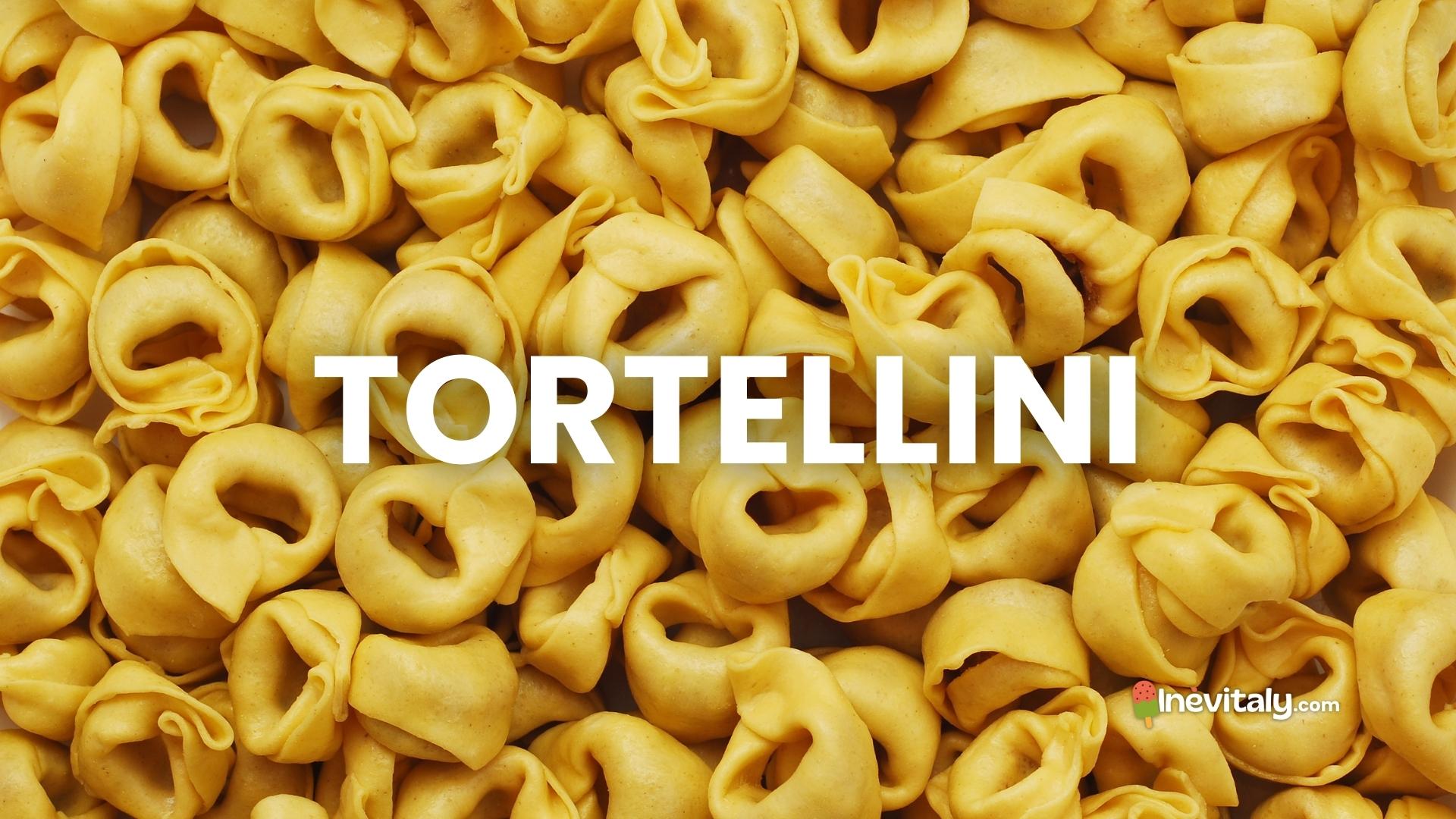
Italian pasta is a culinary treasure that has captured the hearts (and taste buds) of people worldwide. From its Chinese origins to the vast array of shapes — each with its own pronunciation, ingredients and accompanying sauce — pasta remains a true delight that never fails to satisfy. So the next time you're savoring a plate of pasta, take a moment to appreciate the fascinating journey this dish has traveled and the cultural significance it holds for Italians and pasta lovers everywhere.
And of course, try your hand at pronouncing them the Italian way… Buon appetito!
Marco Danesi
(Forever) Pasta Lover






